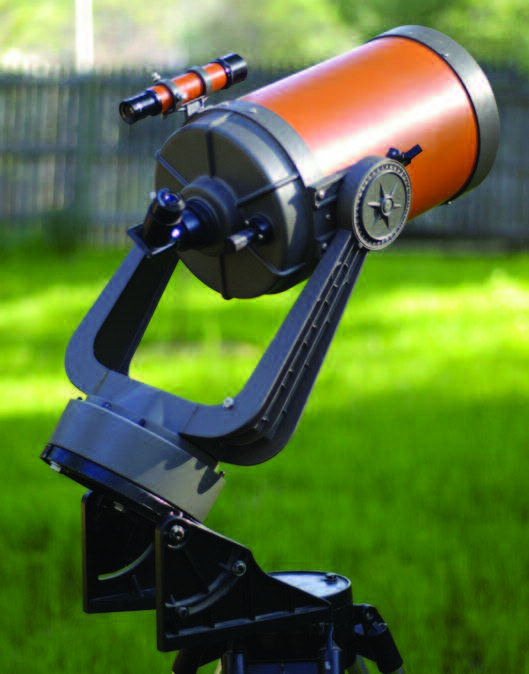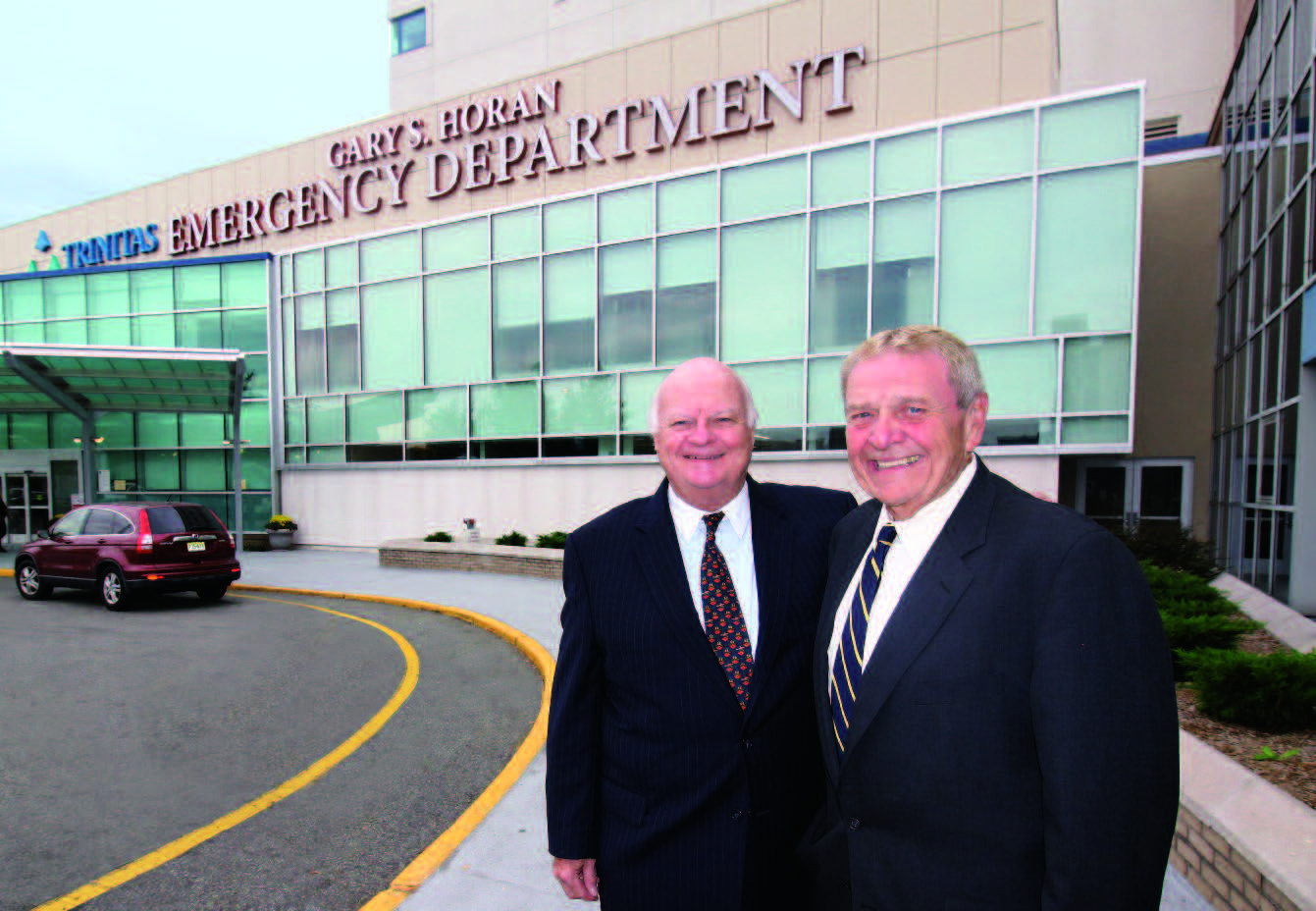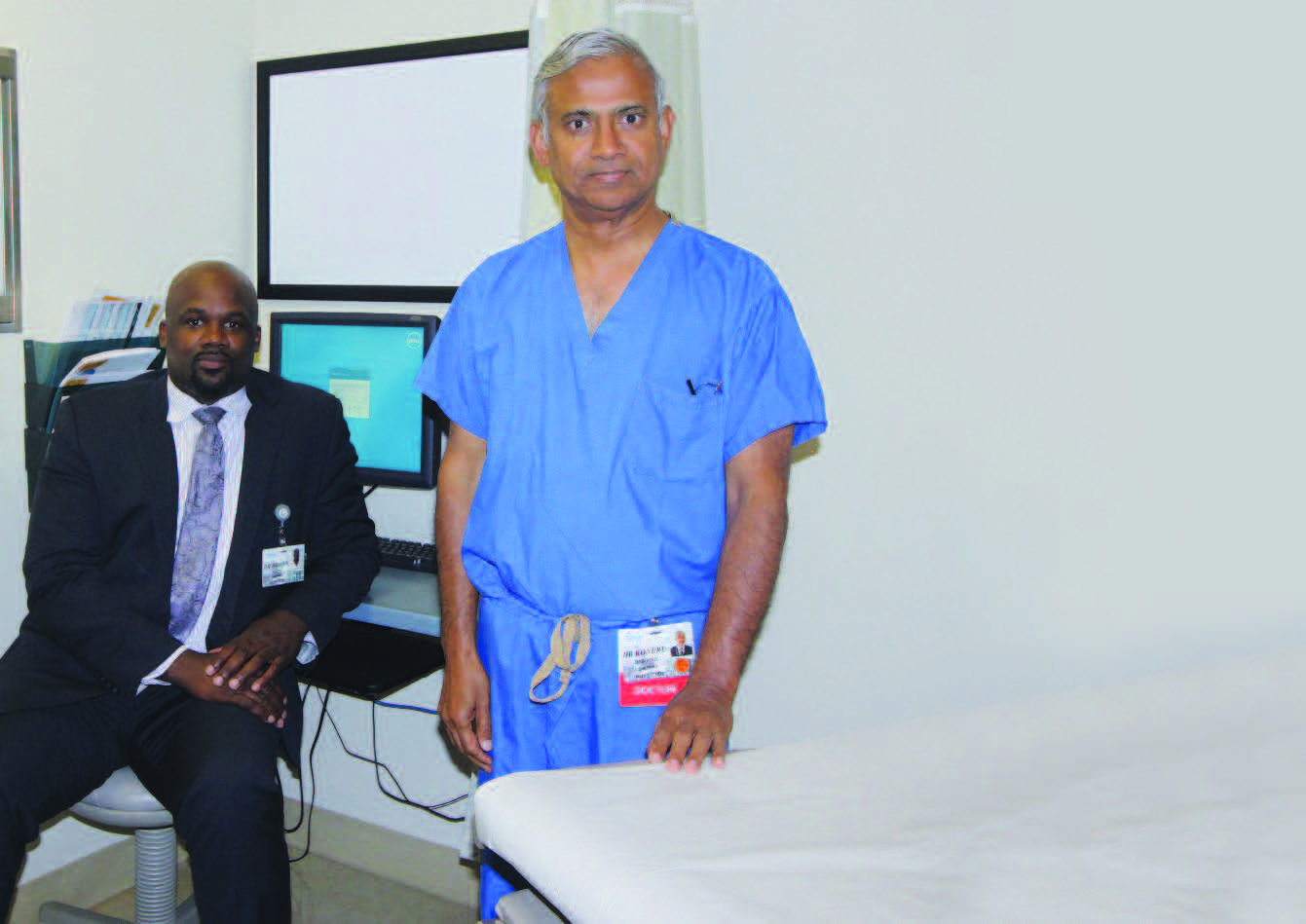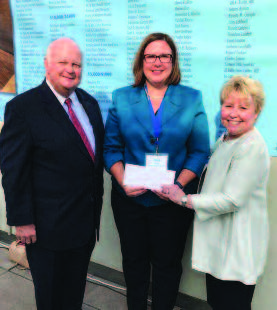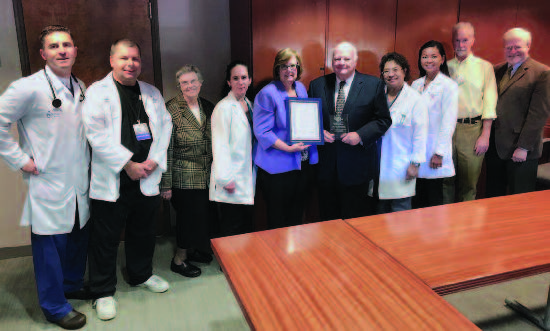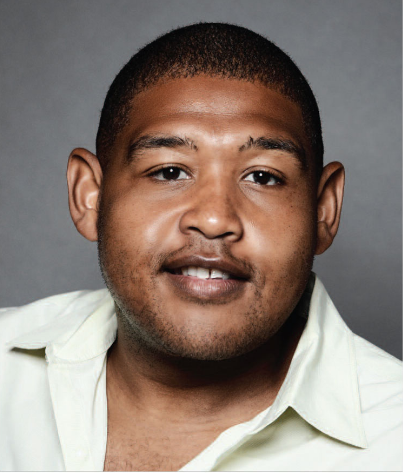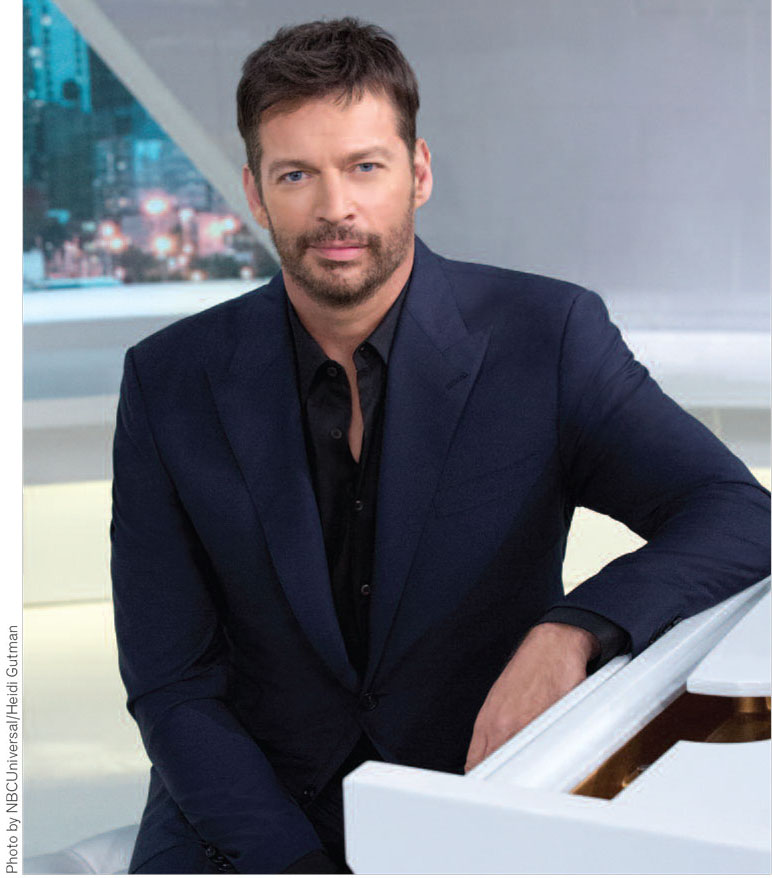New Jersey’s culinary stars are getting their long-deserved red carpet moment.
By Andy Clurfeld
Nick Pizzonia, New Jersey’s leading advocate for artisan organic and natural wines, is having a morning-after revelation following a dinner crafted by Chef David Viana at Heirloom Kitchen in Old Bridge. Pizzonia describes each course in detail. He talks about the technical precision of Viana’s cooking, the pinpoint harmony of his plate partnerships and the revelatory ways the chef plays accent off the main ingredient. He talks about Viana in comparison to other chefs working today in the Garden State, and comes to the conclusion that Viana is a singular talent. But, the wine authority notes, Viana is plying his profession in unprecedented company.

Photo courtesy of Common Lot
“New Jersey is having a moment,” says Pizzonia, founder of Court Wine Club. “We’re definitely having a moment.”
Yes, we are. In almost 30 years of writing restaurant reviews and covering all things culinary, I’ve never seen such a high level of talent spread so widely among the culinary professions in New Jersey. Chefs at fine-dining restaurants get much ink and buzz. Yet also winning raves and fans are the Garden State’s farmers and food artisans, its neighborhood ethnic eateries headquartered in enclaves that reflect New Jersey’s richly diverse population, and its brewers and vintners.
Indeed, as the winners in the new Garden State Culinary Arts Awards show—from Common Lot in Millburn (Best New Restaurant), to The Bent Spoon in Princeton (Outstanding Food Artisan), to Melick’s Town Farm in Oldwick (Outstanding Farmer), to Flying Fish Brewing of Somerdale’s Gene Muller (Outstanding Beer Professional), to The Frog and the Peach in New Brunswick (Best Restaurant), and to Drew Araneo of Drew’s Bayshore Bistro in Keyport (Best Chef)—quality and star power are everywhere in New Jersey.
 The headline that stopped Edible America in its tracks came this past September, when The New York Times restaurant critic Pete Wells awarded three stars to Chef Dan Richer’s Razza Pizza Artigianale in Jersey City. The cheeky headline read: “Is New York’s Best Pizza in New Jersey?” OK, we Joiseyans are used to this kind of stuff, this New Yawky taking ownership of New Jersey superiority whenever it suits.
The headline that stopped Edible America in its tracks came this past September, when The New York Times restaurant critic Pete Wells awarded three stars to Chef Dan Richer’s Razza Pizza Artigianale in Jersey City. The cheeky headline read: “Is New York’s Best Pizza in New Jersey?” OK, we Joiseyans are used to this kind of stuff, this New Yawky taking ownership of New Jersey superiority whenever it suits.
Wells answered that question with a “yes.” But he also said something more important, something we must credit Richer for doing, beyond crafting the best pizza, bread and butter, as well as brilliant, exquisite, peerless salads: “…Razza dresses its pies with local ingredients so distinctive that every time I’ve eaten there, I’ve learned something about New Jersey farms.”
Bingo! Richer, going back to his days at Arturo’s in Maplewood, has been sourcing those “local ingredients” that are “so distinctive.” We’re familiar with our heirloom tomatoes, of course, but Richer brings to the forefront hazelnuts from good ol’ Rutgers U, mozzarella from buffalo in Sussex County, plus Jersey wheatberries essential to Razza’s pizza and pork from Jersey-raised pigs fundmental to Razza’s meatballs. As well as greens and lettuces, fruits and perhaps 30 seasons worth of vegetables. He gets what micro-seasons in the Garden State are all about.
So we have Richer and Viana and vivid voices such as Ehren Ryan, chef-owner of Common Lot—whose Bag of Egg and Crisps dish I challenge our new fans at The Times to refrain from headlining, “Is New York’s Best Nibble Found Due West of the Hudson?” You don’t scan a menu at Common Lot without a brown paper bag of coddled, seasoned-egg-coated homemade potato chips in your hand, fortifying you for the task of editing down Ryan’s engagingly idiosyncratic menu to a manageable dinner.
Take evidence from an early fall dinner-for-two: Scallops, sliced and torched for a mere blink come fanned over the juice of a roasted chicken, then topped with nibs of preserved lemon and near-translucent shreds of pickled fennel. The interplay of sweet and sour, faint anise and bold earth comes close to being the complete aesthetic experience. As does rare beef tossed as lettuces might be with kohlrabi and apple, mint and Thai basil, then given a Peter Pan-style dusting of fried kombu and togarashi just for kicks. Literally.
Ember-roasted cabbage? Who would think that this, as an entree, could make my heart race? With a pesto-like backdrop of pulverized wild nettles, mushrooms both nubby-meaty and skinny-slithery, plus a salad of teeny flowers and herbs as texturally compelling as a John Robshaw textile, my crush is understandable. You might fall for the elegant, compressed Berkshire suckling pig—as intense a dish as I’ve seen Ryan plate, what with farro, pickled tomatoes and leeks keeping pace with the pig and a paisley-shaped dollop of beer-infused mustard doing its best to counter the richness. Wimps might try to unite around something seafood at Common Lot, such as a pan-roasted tilefish given a stew-like side of baby artichokes and grilled corn then topped with sorrel and muksy dashi fortified with corn husk.
This is New Jersey now. From Latour at Crystal Springs Resorts in Sussex County, whose culinary pilot is the exemplary chef and mentor Anthony Bucco, to Red Store in Cape May Point, the domain of its fearless and focused chef-owner Lucas Manteca, the Garden State’s map is pocked with pins earmarking destination dining. There are must-stops in New Brunswick for Bruce Lefebvre’s globe-spanning fare that won The Frog and The Peach the GSCAA’s Best Restaurant nod and in Keyport for Best Chef Araneo’s Southern-accented, soul-satifying dishes at Drew’s Bayshore Bistro. But then why not detour mere miles to Tinton Falls to score sweets made by the GSCAA’s Outstanding Pastry Chef Debbie Mumford at Mumford’s Culinary Center, taking in while you’re there the savory eats made by her husband, the legendary farmer-chef Chris Mumford?
While Chris Mumford was farming every inch of land in and around his late 1980s-to-late-1990s namesake restaurant in Long Branch, the Melicks of Oldwick in Hunterdon’s still-bucolic Tewksbury Township were not resting on the laurels of their 70 million years of tending orchards and fields in New Jersey. Well, maybe not 70 million, but you get the idea. George Melick, now 81 and pretending to be retired, saw his children, Peter, John and Rebecca win the GSCAA for Outstanding Farmer this year. The First Family of Farming in the Garden State is known for an ever-growing list of products: the state’s best apples and peaches, vegetables integral to the menus of chefs at top restaurants, sweet cider and, the newest offering, hard cider. You don’t know thirst-quenching till you taste Melick’s Ginger Hard Cider.
Speaking of thirst-quenching: The neck-and-neck award in the GSCAAs could have gone to the three finalists in the Outstanding Beer Professional category. Gene Muller, of Flying Fish, nabbed it, but his worthy adversaries at Carton Brewing in Atlantic Highlands and Kane Brewing in Ocean Township are to micro-brewing today what Bud and Ballantine were to macro-brewing back when. As a friend was telling me about his addiction to matching Jersey brews to Jersey cheeses, I immediately mind-flew to a pair of Garden State cheesemakers whose cheeses will be at my own last supper: Eran Wajswol, of Valley Shepherd in Long Valley, and Jonathan and Nina White, of Bobolink Dairy & Bakehouse in Holland Township. Some great names, huh?
Truth is, my favorite way to play the name game in New Jersey’s culinary star galaxy is to list my favorite ethnic eateries. I love to say “Cucharamama,” the name of James Beard Award-winning Chef Maricel Presilla’s fine-dining restaurant in Hoboken, but I love to eat her South American food even more. Don Julio, the Chifa restaurant (Chinese, Peruvian-style) in Elizabeth, is on my lips every time I’m hungry and craving wonton soup and fried rice that’s a thousand steps up from strip-mall Chinese take-out.

Maricel Presilla by Joseph Corrado
The thing I may love most about eating in NJ is finding ethnic fare in seemingly unexpected places: Who, outside of Jersey, would think Atlantic County is a hotbed for Vietnamese? Lucky us, living here and knowing better. Count me as one of the many No. 1 fans of Tieu Mien Tay in Pleasantville. Korean? I happily pound the streets of Palisades Park and Fort Lee way up north for the beguiling dishes of Korea, but right at this moment, I’m soft on Soft Tofu in Fort Lee. Middle Eastern is suddenly all the rage, thanks to MishMish in Montclair, while Eastern Mediterranean just might be the coming rage now that newcomer Reyla has taken hold in Asbury Park.
NEW & NOTEWORTHY

Photo courtesy of 100 Steps
So why do I have such high hopes for New Jersey’s culinary future? Because 2017 is yielding an excellent crop of newcomers to the scene.
I mentioned Reyla, a sister restaurant to one of 2016’s top new restaurants, Barrio Costero. The Asbury Park siblings are now two of the hottest draws in the beach city, Barrio for modern Mexican and Reyla for both classic and creative updates on Eastern Mediterranean. There’s also Cargot, a classy French brasserie that’s new in Princeton; Gayeon, a modern Korean in Fort Lee; Hearthside, a wood-fired mecca in Collingswood; and Juniper Hill, a ramped-up roadhouse in Clinton Township where fine-tuned seasonal small plates rule.
The reincarnations of Cranford’s own A Toute Heure and 100 Steps, sold by Andrea and Jim Carbine into hands as capable and nurturing, are showing that second turns can be first rate, with Alexandre Gomes doing high-style fare that’s both exquisite and accessible at ATH and Joe Beninato offering unexpected takes and ingredients on plates that make OHS more than a supper club.
Building a Backyard Observatory
By Christine Gibbs
On August 21, 2017, millions of New Jerseyans turned their collective attention toward the heavens to sneak a peek at a dramatic partial eclipse. For 160 seconds, they experienced the thrill and wonder that the state’s amateur astronomers feel every night. Over the last 20 years, this legion of stargazers has fueled a growing movement to reconnect with the universe through backyard observatories. Thanks to the publicity surrounding the summer eclipse, their numbers should rise sharply between now and the next significant eclipse in the U.S., which is due in 2024. What these newbies will quickly discover is that a backyard observatory offers more than just a window into the heavens. It is a unique way to unplug from the sensory barrage that has become our everyday life.

Photo courtesy of Opoterser
Perhaps the first thing to know is that backyard astronomy has taken a giant leap since the $50 telescopes of our youth. Today’s entry-level devices are far stronger and more sophisticated. And just to be clear, when you talk about the power of a telescope, understand that you are talking about its ability to gather light. It’s not a giant magnifying glass.
Before opening your wallet, it’s a good idea to walk before you run. If you already have some knowledge of the night sky, or at least a healthy curiosity, that’s great. Can you identify a constellation other than the Big Dipper? Can you tell a planet from a star? If not, train your naked eye (with the help of binoculars) to recognize these things before you train a telescope on them. Next, locate an astronomy club near you. There are more than a dozen in the state. Start with the United Astronomy Clubs of New Jersey (uacnj.org), which will point you in the right direction. The organization also has an observatory set-up in Warren County you can visit. You don’t have to join a club right off—most are happy to let you dip a toe before coughing up dues. “Star parties” are a good opportunity to learn what kind of equipment is right for you, and to quiz others who have invested in a home observatory. Finally, spring for a subscription to Sky & Telescope magazine—either online or hardcopy—to get a feel for what others in the hobby are talking about, and also to peruse the ads.
CHOICES, CHOICES
At this point, you will have become acquainted with three different types of telescopes: Newtonian Reflector, SCT and Refractor. Refractors are what most people picture when they think of a telescope. Light enters through a lens at one end and is focused by the eyepiece at the other end. Top-of-the-line refractors are fantastic, but can be extremely expensive. Newtonian Reflectors (yes, Isaac Newton is credited as the inventor) collect light at the bottom end of the tube and reflects it back toward the eyepiece at the top, using a large parabolic mirror and a second, smaller mirror. Newtonian telescopes offer great bang for the buck, tend to be bulky as they get more powerful, and also require frequent realignment of the mirrors. SCT (which stands for Schmidt-Cassegrain Telescopes) models combine lenses and mirrors, which enables the telescopes to be fairly compact. Another appealing feature of SCT’s is that they can be manipulated through a laptop. The downside is that the sharpness of the images you’ll see may fall a bit short of the other two types. A very good entry-level telescope will run you $500 and up, depending on the type.
 Also, for many amateur astronomers, size really does matter. Lugging around a huge telescope—even from your garage to your patio—gets old fast for most people. Which is why, when it comes time to invest in a really good telescope, the conversation (and budget) includes construction of a backyard observatory.
Also, for many amateur astronomers, size really does matter. Lugging around a huge telescope—even from your garage to your patio—gets old fast for most people. Which is why, when it comes time to invest in a really good telescope, the conversation (and budget) includes construction of a backyard observatory.
What kind of observatory would work for you? There is a profusion of examples out there, ranging from the rudimentary to the monumental. It all depends on the degree of investment you’re willing to make—physically and financially. Most experienced astro aficianados agree that an important early decision is to select between a roll-back roof model or a more sturdy wind-proof dome. Other considerations involve the size and location of viewing windows and rotation capabilities. To move ahead with your project, you must also honestly assess how much of your well-tended earthly garden you are willing to sacrifice for a better view of what lies above.
Most amateur astronomers take their initial plunge with a simple structure that is really no more than a shed with a retractable roof. Thumb through astronomy magazines a century old and you’ll find how-to designs for this type of observational platform. If you’ve got the time, the lumber and the skills, you can easily build one yourself. There are also a number of vented, climate-controlled structures commercially available, including the aptly named Astrocloset (left), which looks a bit like an aluminum meat smoker. All are simpler, less-expensive alternatives to full-scale backyard observatories that can be set on a deck, patio or basic concrete slab. Typically they are no bigger than 5’ x 5’. They start in price around$2,000, plus shipping costs, and most require more than a little assembly.
Traditional domed observatories range from small, budget models to sky’s-the-limit structures that can run $100,000 or more. The main advantage of a dome (beside the fact that it looks cool) is its ability to rotate its opening to follow the stars as they move across the sky, shielding the telescope from stray light and wind. The size of the dome correlates to the size of the telescope and the size of the astronomer. Most are motorized. Decent, entry-level domed observatories (from companies such as NexDome, Skyshed and ExploraDome) are made of lightweight materials and come shipped in modular pieces. They run $3,000 to $5,000 plus construction cost and accessories. There are less expensive options, but the cheaper the price tag, the less sturdy and more problematic they tend to be.
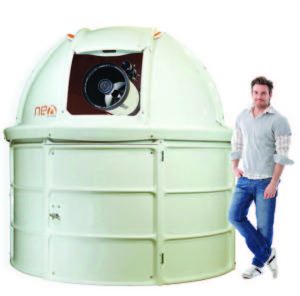
Photo courtesy of NexDome
WE ARE NOT ALONE
For those interested in building their own backyard observatories, there is a community of do-it-yourselfers and legitimate engineers offering online advice and instructions. Some, like rocketroberts.com, actually document the project from start to finish. Regardless of the scope of the decision to build, there is widespread agreement on the factors to consider before taking that big step forward. One such astro neophyte was Tim Hunter, who—through painful personal experience—compiled a list of 8 Backyard Observatory Mistakes to Avoid:
Location, Location, Location
The observatory can never be too close to your back door if convenience was the inspiration in the first place.
Hot Topics
Beware of concrete, bricks, asphalt walkways and black-top paved parking lots that absorb and radiate heat that interferes with telescopic performance.
Money Matters
You can depend on cost overruns, so prepare your budget “realistically”…and then double or triple it!
Follow the Rules
Be sure to check out local zoning and permitting regulations related to construction sites, lighting ordinances, etc., to avoid fines and, in extreme cases, having to dismantle.
Power Play
Outlets, outlets everywhere and then some extra. You can never have enough well-placed electrical wiring to conveniently service all your valuable equipment.
Peace of Mind
Make security a priority. Think high fences, high-tech motion detectors, and the like, and then sign up for a backup insurance policy just in case.
Unwelcome Visitors
Your observatory can be quickly compromised by a host of invaders of the vermin variety to include wasps, rats, squirrels and others. Regular inspections can help to avoid serious damage to equipment and the structure itself.
What else is new?
It is only a matter of time that practically everything in your observatory will be updated, upgraded, or destined for the Smithsonian. Make sure an ongoing budget is prepared for the inevitable.

www.istockphoto.com
FAMILY MATTERS
For most parents, getting their kids (and, yes, themselves) unplugged and together in a group activity is a constant challenge. Backyard astronomy is a great way to get everyone out of the house, enjoying science and sharing the spirit of discovery. It’s also a wonderful way to engage with history. Written records of astronomical observers date back to 1600 B.C. in Babylonia, but prehistoric sites such as Stonehenge—which functioned as an enormous celestial/lunar tracking device—tell us that families have been pondering the mysteries of the skies for countless millennia.
LOOK! UP IN THE SKY!
According to SeasSky.org, these are some of the celestial highlights for New Jersey backyard astronomers in 2018:
January 3-4 January 31
Quadrantids Meteor Shower.
Full moon, blue moon and supermoon
May 9
Jupiter closest to Earth and fully illuminated by the sun.
June 27
Saturn closest to Earth and fully illuminated by the sun.
July 27
Mars closest to Earth and fully illuminated by the sun.
August 17
Best view of Venus—low in the western sky right after sunset.
September 7
Neptune closest to Earth and fully illuminated by the sun.
October 23
Uranus closest to Earth and fully illuminated by the sun.
November 6
Best view of Mercury—low in the western sky right after sunset
December 13-14
Geminids Meteor Shower—the best of the year.
The Energy Star program turns 25.
By Caleb MacLean
As 25th anniversaries go, the milestone celebrated by the EPA and DOE for its Energy Star program in 2017 doesn’t rate particularly high on the thrill meter. The same year the program was launched (1992), Cartoon Network went on the air, the Mall of America opened in Minnesota, John Gotti was sentenced to life in prison, and Vice President Dan Quayle gave his famous Murphy Brown speech. No one cracked out the champagne for any of those events either. And yet, all these years later, we encounter Energy Star stickers almost every time we enter a store (brick and mortar, as well as online) that sells computers, TVs and appliances.
Which got me wondering…what the heck is Energy Star and do I even know what that rating means?
 Like 88 percent of Americans, I am aware of the Energy Star “brand” and can bluff my way through a fairly good explanation of why it’s important. But just for the record, the Energy Star program was created by our federal government—jointly by the Environmental Protection Agency and Department of Energy—during the Bush I administration. Initially, it was aimed at the power-sucking computer industry, as more and more Americans were purchasing desktops in their homes. The Internet was barely a thing back then; one wonders whether the Energy Star architects saw it coming.
Like 88 percent of Americans, I am aware of the Energy Star “brand” and can bluff my way through a fairly good explanation of why it’s important. But just for the record, the Energy Star program was created by our federal government—jointly by the Environmental Protection Agency and Department of Energy—during the Bush I administration. Initially, it was aimed at the power-sucking computer industry, as more and more Americans were purchasing desktops in their homes. The Internet was barely a thing back then; one wonders whether the Energy Star architects saw it coming.
The chief architect, in case you were wondering, was John Hoffman, one of the first federal officials to seriously study climate change. In the 1980s, he convinced Ronald Reagan to back an international effort to protect the ozone layer. Hoffman then moved on to conceiving Energy Star, which was his clever way of reducing power plant emissions that produce greenhouse gases, without actually going after the power plants. Hoffman got the idea while looking around his Washington office at all the humming CPUs and monitors, and wondering if there was some way for manufacturers to create a “sleep” or “low-energy” mode. The program, which was voluntary, soon spread beyond computing to other appliances, and was implemented during the Clinton administration by Brian Johnson and Cathy Zoi, who guided the president’s energy policy
 Today, the Energy Star program saves tens of billions of dollars a year in energy, and has been adopted by the European Union, Canada, Australia, Japan and several other first-world countries. To earn an Energy Star designation, a product must demonstrate that it uses at least 20 percent less energy than required by standards set by the EPA or DOE. That number depends on the product. A dishwasher must prove a 41 percent savings. Fluorescent lights must use 75 percent less energy and last 10 times longer than a standard-issue light bulb. TV’s have to come in at 30 percent. Newly constructed homes can also qualify for an Energy Star rating; they must use 15% less energy than homes built in 2003. In all, more than 50,000 different products are now part of the program. About half of American households purchase at least one Energy Star–rated product a year.
Today, the Energy Star program saves tens of billions of dollars a year in energy, and has been adopted by the European Union, Canada, Australia, Japan and several other first-world countries. To earn an Energy Star designation, a product must demonstrate that it uses at least 20 percent less energy than required by standards set by the EPA or DOE. That number depends on the product. A dishwasher must prove a 41 percent savings. Fluorescent lights must use 75 percent less energy and last 10 times longer than a standard-issue light bulb. TV’s have to come in at 30 percent. Newly constructed homes can also qualify for an Energy Star rating; they must use 15% less energy than homes built in 2003. In all, more than 50,000 different products are now part of the program. About half of American households purchase at least one Energy Star–rated product a year.
Of course, there were some bumps and bruises along the way. Many companies found loopholes enabling them to qualify inefficient products for the Energy Star program. Between 2006 and 2011, critics pointed out other major flaws, including the fact that some companies were allowed to test their own products, and then submit the results. You can imagine how that worked out. In 2011, the EPA slammed the lid on this type of fraud by demanding that all products sold in the U.S. be tested and certified by an EPA-recognized third-party laboratory. Part of the EPA budget cuts proposed by the Trump Administration in 2017 would reportedly eliminate this safeguard, so stay tuned.
Another criticism leveled at the program is that, for certain appliances, a sexy Energy Star rating may have a downside. For instance, an energy-efficient fridge may use a smaller compressor, have more insulation and employ a computer to regulate temperature. That either means less room inside or more space taken up outside (because of added insulation), and also that a buyer might have to service or replace a compressor or computer that fails. If that fridge turns out to be too much of a headache, it will end up in a landfill long before its intended lifespan, where it could damage the environment.
 For now, at least, those bright yellow tags do mean something. That’s important to understand because, generally speaking, the better the performance, the more expensive the purchase price will be. The idea is that, over time, the products with the highest ratings will actually be “cheaper” thanks to lower energy costs.
For now, at least, those bright yellow tags do mean something. That’s important to understand because, generally speaking, the better the performance, the more expensive the purchase price will be. The idea is that, over time, the products with the highest ratings will actually be “cheaper” thanks to lower energy costs.
The first thing to look for when shopping is the Energy Star logo, which is usually located in a corner of the label. Next, under the words Energy Guide (where the bottom of the Y is an arrow), you’ll find a dollar amount. That represents a rough estimate of what the appliance will cost to run over a year. Under the dollar amount is a number that represents the kilowatt hours of electricity the appliance is likely to consume. Both numbers are handy for doing side-by-side comparisons. If you have an electric bill handy, you can actually multiply the cost per KwH listed on your statement by this number and see if it will cost more or less to run in your area.

www.istockphoto.com
The administrators of the Energy Star program will be the first to admit that its numbers are only a guideline. Also, they are far more impactful in some categories than in others. And as technology changes so do the program’s standards. The numbers of the past quarter-century, however, definitely speak for themselves. Buying and building within the Energy Star spectrum has saved the world a half-trillion dollars in energy costs…and helped us all breathe a bit easier.
Editor’s Note: Many Energy Star appliances pay off with tax credits, too. Typically these credits can be applied to your state tax bill, not your federal return. To better understand how rebates work, visit energystar.gov and type in your zip code.
Working together to make a good idea great.
By Yolanda Navarra Fleming
In 2001, the ink was barely dry on the merger that created Trinitas Regional Medical Center. The new hospital’s CEO, a respected executive, had retired, the country was coming off a contested presidential election, and Elizabeth—along with the rest of the nation—would soon be dealing with the “new normal” of the September 11th terror attacks. It was a time of profound uncertainty—probably not an ideal time to look for a “star-quality” CEO. Indeed, Trinitas is unique in terms of sponsorship and governance. The hospital is officially sponsored by the Sisters of Charity of Saint Elizabeth in partnership with Elizabethtown Healthcare Foundation, which is the former parent of Elizabeth General. The new CEO needed to be a team-builder from Day One, creating chemistry from the goals and objectives of two separate entities. Fast-forward 16-plus years. Board chair Vic Richel and CEO Gary Horan sat with EDGE Business Editor Yolanda Navarra Fleming to talk about that transformative moment in the hospital’s history, and all that followed.
VR: We did a national search and there were a lot of really qualified candidates, but what we really needed was a personality with the tremendous ability to grow a business, to effectively create a new atmosphere from the three prior individual hospitals. Gary instantly stood out. His personality is magnanimous. His background was spectacular. He had run other hospitals, but the most important ingredient Gary had was his ability to quickly create a team and a style that would enable us to flourish.
 GH: I was in my 11th year as a CEO at Our Lady of Mercy in the Bronx. Trinitas was a challenge—and I always look for a challenge. I was at an age where, if I was going to make a change, I had to make it, and I was in the prime of my administrative background. I was very impressed with the committee evaluating the candidates, and the Board of Trustees, I had an opportunity to meet the administrative staff and I was impressed with the organization and the merger. However, I knew there were challenges in the culture of one hospital against another hospital. Looking back, we have done things that frankly, in my own mind, I didn’t think we’d be able to accomplish. One of the biggest difficulties was becoming financially stable as a newly merged institution, which can create a lot of chaos. We had to reduce the staff and evaluate the organizational leadership as to whether the chemistry was right between all the different executives. I’m pleased that the changes we made have been long-standing. Most of the people I’ve brought in have been here with me almost as long as I have.
GH: I was in my 11th year as a CEO at Our Lady of Mercy in the Bronx. Trinitas was a challenge—and I always look for a challenge. I was at an age where, if I was going to make a change, I had to make it, and I was in the prime of my administrative background. I was very impressed with the committee evaluating the candidates, and the Board of Trustees, I had an opportunity to meet the administrative staff and I was impressed with the organization and the merger. However, I knew there were challenges in the culture of one hospital against another hospital. Looking back, we have done things that frankly, in my own mind, I didn’t think we’d be able to accomplish. One of the biggest difficulties was becoming financially stable as a newly merged institution, which can create a lot of chaos. We had to reduce the staff and evaluate the organizational leadership as to whether the chemistry was right between all the different executives. I’m pleased that the changes we made have been long-standing. Most of the people I’ve brought in have been here with me almost as long as I have.
VR: Gary has worked beautifully with the Board of Trustees, with the city of Elizabeth, the mayor, and the elected officials of the community, all of whom are great supporters of the hospital. We couldn’t be more proud of where we are. I should add that the Sisters of Charity is enormously supportive of our mission. We are unusual in that every two years the chairs change. The Sisters of Charity representative becomes chair and I become vice-chair. It’s a wonderful combination. Sister Rosemary has been a terrific vice-chair and in January she becomes chair.
GH: My chemistry with the board has been superb. The mutual trust is there. I don’t think there’s ever been a vote that was not 100 percent unanimous. I think that’s due to Vic’s leadership. We’ve developed a very strong relationship of confidence and trust. I am always honest with the board. I tell them the good, the bad and the ugly, and they appreciate that. They don’t always like the ugly—and there is some ugly sometimes—but they need to know and address those issues accordingly. They also know the positives, and there is an incredible amount of positives.
VR: There are. We’re really well positioned heading into the future. We are fiscally sound. We invest well and we are profitable. The biggest challenge we have is managing through the government oversight and the difficulty with dealing with various changes in rules and regulations at the federal and state levels. Gary and his staff are very skilled at working through those processes.
GH: It’s not a one-person show. We have a solid executive staff, plus the management staff. The mid-level staff is fantastic and our employee staff is excellent, and we have great employee relations. We have a very good, solid chief financial officer who keeps me in check, and we work very well together as a team. People are not afraid to speak up at our meetings and say what they like and what they don’t like, and we discuss it. We have taken Trinitas from Trinitas Hospital to Trinitas Regional Medical Center. We have grown programs and facilities. We’re financially sound and we’re independent. What that means for us is that we govern ourselves and we have an independent board. We have clinical affiliations where it is most appropriate for Trinitas, and also where we can help other organizations. The longevity of our staff is tremendous. And in terms of my relationship with Vic, the confidence and trust has been there from the beginning and it’s a terrific partnership.
VR: It really is. We work beautifully together. Gary always tells it just as it is. One of his biggest strengths is his ability to plan effectively. He anticipates the negative and plans around it. I have the same kind of style and we work very effectively together. Gary far exceeded our expectations. We are now one of the major independent hospitals in New Jersey. We have centers of excellence that are outstanding and Gary has put together a wonderful staff. EDGE
Editor’s Note: Can’t get enough of Vic and Gary? Go to EdgeMagOnline.com to read more of their conversation.
A pair of TRMC newcomers bring a healthy dose of hope.
By Christine Gibbs
Not all that long ago, a diagnosis of liver or pancreatic disease would strike fear in the heart of a patient. Now there is hope on the horizon thanks to new treatment options, especially when an early diagnosis is involved. That hope is embodied in a pair of highly skilled surgeons that recently joined the Trinitas Regional Medical Center staff: Dr. Lloyd Brown and Dr. Baburao Koneru, both of whom are hepatopancreatobiliary (HPB) specialists.
Dr. Koneru, came aboard as an attending surgeon at TRMC in 2015, has been practicing his specialty for 39 years. Dr. Brown has been on staff in the Surgery Department since early 2016. Both doctors are part of the Division of Liver Transplant and Hepatobiliary Surgery at University Hospital. In addition to their intense surgical responsibilities, they find time to share their expertise as professors at the Rutgers Medical School, in Newark. “The liver is the only organ that can regenerate itself, which is why live donors are acceptable for transplanting,” says Dr. Brown (left), who specializes in liver transplants and resections. “Only 30 percent of the liver is absolutely necessary to survive, making it possible to safely remove two-thirds of the liver of a living donor. And it takes only a few months for 75 to 80 percent of the organ to regenerate itself.”
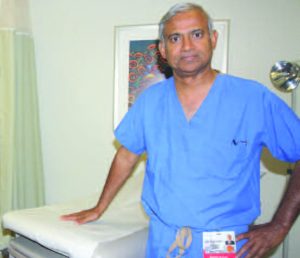
Dr. Koneru (right) focuses on surgical treatments of
both the liver and the pancreas. One of the procedures he uses on certain of his pancreatic cancer patients is the Whipple resection, where portions of the pancreas can be safely removed. When treating liver diseases, Dr. Koneru says that ablation as a technique is frequently recommended. Ablation involves surgical destruction of diseased tissue through a variety of procedures, including chemical ablations, microwave ablations (which employ heat energy), and radiofrequency ablations (which use high-energy radio waves to destroy cancerous cells).

Dr. Brown and Dr. Koneru were drawn to HPB surgical careers for similar reasons.
“I have always had an interest in pursuing a profession requiring a high degree of medical skills that would help patients through a personal crisis in their life,” says Dr. Brown. “I believe that surgery is a fascinating life-long learning experience.”
Dr. Koneru says that he too became fascinated with the opportunity to “manage treatment of highly complex disorders that require detailed patient information analysis and highly developed skills.” He also emphasized his commitment to “the challenge of providing the best post-surgical patient care possible.”
Despite a relatively brief time at Trinitas, both doctors have positive things to say about the experience. Dr. Brown describes the environment in the Surgical Department as very collegial, with excellent channels of communication—which is critical to optimizing each surgeon’s performance. Dr. Koneru praises the efficiency of the operating room and intensive care units, as well as the quality of care provided by the regular nursing staff. He describes Trinitas as “simultaneously patient- and physician-friendly.” Dr. Koneru also appreciates the opportunity to provide expert care to patients in the greater Elizabeth area.
As for the future of HPB surgery, the greatest strides, they agree, will be made in minimally invasive robotic-assisted surgery. “We have already begun to develop the minimally invasive and robotic-assisted Hepatobiliary surgery practice here at Trinitas,” points out Dr. Brown, who recently performed three robotic-assisted cases. He is convinced that Trinitas will continue its policy of acquiring the best and latest equipment—which will result in increased positive outcomes—and that Trinitas surgeons will continue to pursue the latest advances in surgical techniques. Dr. Koneru adds that, in addition to robotic techniques being used more widely, the number of surgeons with cutting-edge expertise in the field will increase: “That will make more of them available to join the staff of many smaller hospitals, which can then provide higher quality treatment locally.”
Both doctors envision the success rates for HPB patient surgeries to continue to improve.
 HEP C
HEP C
Today Hepatitis C, one of the viral infections that causes liver inflammation, has been receiving much media attention. Although there are five types of hepatitis—from A through E—it is Hep C that is having the greatest impact on the Boomer population. Statistics indicate that 1 in 30 Boomers is infected with Hep C, but not all of those infected know it. If left untreated, the disease can cause potentially fatal liver complications.
A simple blood test during your next doctor appointment can determine whether you have Hepatitis C. If the result is positive, all you may need is a script for ribavirin, a drug recently approved by the FDA, which interrupts the virus’s ability to replicate. Clinical tests have shown a 98 percent cure rate—more than double that of the drugs it replaces.
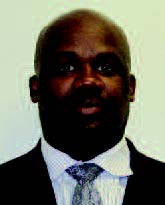 Lloyd Brown, MD, MS
Lloyd Brown, MD, MS
HPB Specialist
Assistant Professor of Surgery Division of Liver Transplant & Hepatobiliary Surgery
Rutgers New Jersey Medical School 973.972.2408
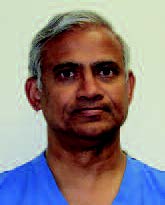 Baburao Koneru, MD, MPH HPB Specialist
Baburao Koneru, MD, MPH HPB Specialist
Professor of Surgery
Division of Liver Transplant & Hepatobiliary Surgery
Rutgers New Jersey Medical School 973.972.2408
News, views and insights on maintaining a healthy edge.
 The Hidden Costs of Strokes
The Hidden Costs of Strokes
A recent study in England by the Stroke Association echoes what researchers here in the U.S. have been saying for years: Unless we change our eating, smoking and exercising habits—and manage blood pressure better—the number of first-time stroke victims will rise 50 to 60 percent over the next 20 years. And with more people surviving strokes, the “cost” of strokes to the economy could easily triple. High blood pressure is the number-one cause of strokes, and is also the most preventable cause. Yet by some estimates, four in ten people with high blood pressure may not be receiving appropriate treatment to manage the condition. And countless millions are unaware they have high blood pressure at all. What are the signs to look for to determine if you or a loved one are experiencing a stroke? “If a person notices any sudden onset of neurological symptoms that include numbness, difficulty walking, confusion, slurred speech or difficulty speaking, then 911 should be contacted immediately,” says Dr. Nancy Gadallah,

Nancy Gadallah, MD
Neurology & Sleep Medicine
Trinitas Regional Medical Center, Edison 732.321.7010
a neurology specialist at Trinitas. “There is treatment for strokes, but it is time-sensitive.” Dr. Gadallah suggests visiting stroke.org for more information.
 Postpartum Issues Beyond Depression
Postpartum Issues Beyond Depression
Recently, Ivanka Trump revealed that she suffered bouts of postpartum depression after each of her three children were born. This triggered helpful and informative public discourse on the tangle of emotions that impacts roughly one in nine women in the U.S. Psychological issues are not the only thing new mothers need to be aware of, says
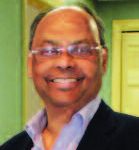
Abu Alam, MD
Chair, Obstetrics & Gynecology Trinitas Regional Medical Center Elizabeth, Westfield 908.994.5500
Dr. Abu Alam, Chair of Trinitas’ OB/GYN Department. “After giving birth, it is normal to experience some fatigue and soreness, but there are warning signs that may require additional medical care,” he says. “These include heavy bleeding, high fevers, elevated blood pressures, discharge and pain from any incision sites, pain when going to the bathroom, severe abdominal pain with vomiting, swelling in your legs, and feeling sadness for more than 10 days following delivery.” In these cases, it is vital that you contact your physician, he adds, and not be timid about dialing 911 in an emergency—for you and your baby.
Zika’s “Silver Lining”

Does Zika have a silver lining? According to the Journal of Experimental Medicine, the mosquito-borne virus has shown an ability to selectively infect and kill cancerous cells in adult brains. A team of researchers from the medical schools at Washington University and UC–San Diego injected Zika into mice with aggressive cancers, such as glioblastoma, and were stunned to find that it shrank tumors while leaving other brain cells untouched. Similar experiments on donated human brains appeared to have the same results. This could lead to a game-changing treatment for diffuse brain cancers, which make it difficult to determine where cancer ends and healthy tissue begins—and which don’t always respond to chemo, radiation or surgery.
 Could Obesity be a Mental Illness?
Could Obesity be a Mental Illness?
A study completed last summer at Children’s Hospital in Los Angeles has added a new wrinkle to the childhood obesity discussion. Researchers used MRIs to explore whether there is a psychological difference between overweight and lean adolescents. They found that food stimuli activated regions of the brain in both groups equally, but that kids at an increased risk for obesity had less neural activity in parts of the brain that support self-regulation and attention. In other words, the risk for obesity isn’t driven exclusively by the absence or presence of urges to eat high-calorie foods, but also by the ability to control those urges. More than half of all adolescents in the United States are either overweight or obese, and two-thirds of children of overweight parents are (or are likely to become) overweight themselves.
 Working Out Heart Attack Symptoms
Working Out Heart Attack Symptoms
Regular workouts are among the top recommendations cardiologists give their patients. However, according to research presented at the 2017 meeting of the European Society of Cardiologists, about 5 percent of cardiac arrest cases are related to exercise. Cardiac arrest is different from a heart attack, but can often follow a heart attack. The Society recommended that gym-goers be aware of where the automated external defibrillator (AED) is located. Even in the hands of an “amateur” the device is a lifesaver. Just as important, it is important to recognize the first signs of a heart attack so that you can offer assistance or (if you are the victim) ask for help. Some very important signs and symptoms that need to be addressed right away are chest pain, unusual shortness of breath, chest tightness, unilateral leg swelling or pain, or drooping of one side of the body, according to

Vasyl Pidkaminetskiy, MD Internal Medicine
Trinitas Regional Medical Center Clark, Cranford, Elizabeth, Linden
732.499.9160
Dr. Vasyl Pidkaminetskiy, an Internal Medicine specialist at Trintias. “Although those are general, a person should seek medical attention if there are any unusual signs or symptoms going on with the body,” he says. “And remember—something that is atypical from the normal in an individual is nature’s way of telling a person that something may be wrong and further evaluation is needed.”
 Does Natural Selection Still Influence Human Evolution?
Does Natural Selection Still Influence Human Evolution?
A study published in PLoS Biology looked at the DNA of 215,000 individuals of European descent and offered the following answer: Yes. The genetic research looked for evidence of “evolution” over one or two generations by focusing on 8 million common mutations. They found evidence that life-shortening genes related to heart disease, Alzheimer’s and a predisposition to heavy smoking are being “weeded out,” presumably by some agent of natural selection. The researchers also noticed a trade-off between fertility and longevity that had been previously observed in animals but never in humans.
 Low-Dose Recommendation
Low-Dose Recommendation
A recommendation in late-September from the U.S. Preventative Services Task Force got the attention of a lot of current and former smokers. The group is urging individuals ages 55 to 80 who are current pack-a-day smokers (or who quit within the last 15 years) to have an annual Low-Dose CT scan. Lung cancer can present several different symptoms, points out

Nancy Gadallah, MD
Neurology & Sleep Medicine
Trinitas Regional Medical Center, Edison 732.321.7010
Dr. Clarissa Henson, Chair, Radiation Oncology at Trinitas. “If you are suffering from a chronic cough, shortness of breath, weight loss and fatigue, these could be signs of an underlying lung cancer. Lung cancer is often rapidly growing and can present with metastasis to the bone or brain and often can present with worsening bone or back pain, and even headaches, vomiting or a change in speech or mobility when the cancer has spread to the brain.” A Low-Dose CT scan can detect lung cancer at a very early and highly curable stage. Trinitas offers a new low-dose Lung Screening Program that can detect traces of cancer within seconds. For more information on this program, call (908) 994-5051.
Sports Photography by Rob Tringali

Aaron Judge Baltimore, MD • May 2017
Rob Tringali can barely remember a moment when he didn’t experience the sports world through the business end of a camera lens. His father founded SportsChrome, the first sports photography house, and he has been capturing great athletes and major events for magazines, newspapers and web sites ever since. Rob’s work has appeared on the cover of Sports Illustrated and ESPN the Magazine, and he is a familiar figure at the World Series, Super Bowl, U.S. Open and Olympics. His ability to isolate moments of power has made him one of the world’s top sports photographers. To see more of his work go to robtringali.com.

Aroldis Chapman Bronx, NY • July 2017

Bryce Harper Queens, NY • May 2017

Jay Ratliff Philadelphia, PA November 2009

Serena Williams Queens, NY September 2017

Felipe Harrision, NJ, June 2015

Mark Burik New York, NY June 2016

Dustin Johnson Doral, FL • March 2011

Sara Hughes New York, NY June 2016


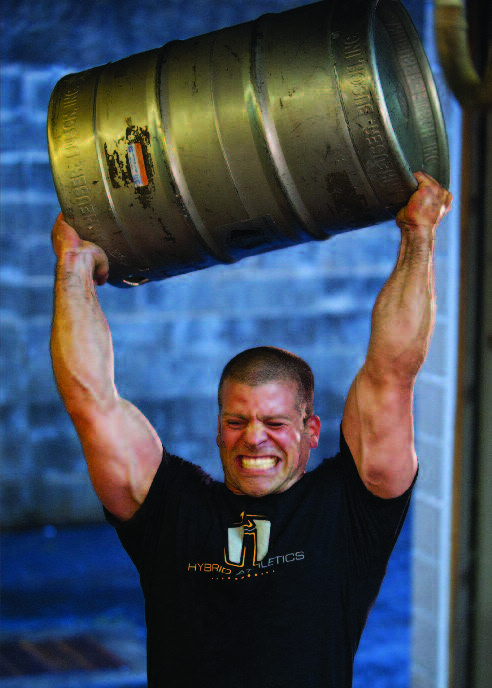
Rob Orlando, Stamford, CT, April 2011
 ANOTHER HIT ON THE LINKS!
ANOTHER HIT ON THE LINKS!
Trinitas Health Foundation hosted yet another successful Annual Golf Classic & Spa Day at Echo Lake Country Club in Westfield, New Jersey. The event raised over $180,000 in net proceeds! Over 120 golfers enjoyed a gorgeous day on the links. The day was complete with golf contests, raffle drawings and great company. While our golfers were out enjoying their day, our 25 spa guests enjoyed a pampering at Skin Deep Salon and Spa. All of the women received expert services and came to the evening’s festivities feeling refreshed! The evening concluded with cocktails, dinner, raffle prize giveaways and a silent auction where many lucky winners went home with some fantastic prizes. Thank you to all of our supporters! Please save the date for next year’s event on Monday, September 24, 2018. Pictured from left to right: Dr. John D’Angelo, John Richel, Dr. Richard Mackessy, Vic Richel.
 ELIZABETHTOWN GAS MAKES A GENEROUS GIFT
ELIZABETHTOWN GAS MAKES A GENEROUS GIFT
Gary S. Horan, President & CEO of Trinitas, thanked Tina Earley (center), Manager of Government and Community Affairs at Elizabethtown Gas,
along with Nadine Brechner, Chief Development Officer and Vice President of the Trinitas Health Foundation. Elizabethtown Gas awarded Trinitas a $25,000 grant for Proud Past, Promising Future: The Campaign to Expand Trinitas Regional Medical Center’s Emergency Department (ED). Thanks to Elizabethtown Gas for their generosity and continued support!
 INVESTORS FOUNDATION, INC. DONATES $50,000 FOR THE GARY S. HORAN EMERGENCY DEPARTMENT
INVESTORS FOUNDATION, INC. DONATES $50,000 FOR THE GARY S. HORAN EMERGENCY DEPARTMENT
Thanks to Investors Foundation, Inc. for their generous gift of$50,000 to Proud Past, Promising Future: The Campaign to Expand Trinitas Regional Medical Center’s Emergency Department. Carmen Rivera (center), Assistant Vice President and Branch Manager at Investors Bank in Elizabeth, presented the check to Nadine Brechner (left), Chief Development Officer and Vice President of the Trinitas Health Foundation and Joanne McGann (right), Director of Major Gifts also from the Foundation. The overall goal of this project was to not only make the delivery of emergency care more efficient, but also more personal at Trinitas.
THE TRINITAS CHARITABLE GIFT ANNUITY
Would you like to provide for the future of Trinitas Regional Medical Center while ensuring that you or a loved one will receive a guaranteed income for life? A Trinitas Charitable Gift Annuity might be right for you! Benefits include: Earn as much as 10% interest* while supporting Trinitas Regional Medical Center; Receive fixed payments for life and help save lives; cure patients and keep people healthy; No trust administration and no set up costs to the donor; Receive an income tax deduction for a portion of your gift; Leave a legacy and assure the future vitality of Trinitas Regional Medical Center; and automatic inclusion in our Cornerstone Club – a legacy society.
Call Nadine Brechner or Joanne McGann today at (908) 994-8249 for additional information or to set up a meeting to discuss your gift to Trinitas.
Do adoptees have an edge in the celebrity department?
By Mark Stewart
On January 1, 2017, a new law went into effect that has proved to be a game-changer for thousands of New Jerseyans. Anyone adopted in the state can have their records unsealed and view their original birth certificates. For the vast majority of children born prior to the 1990s—when the idea of “open adoptions” began to gain momentum—the answer to the question Who am I? has been Who knows? Since the new law went into effect, several thousand adoptees have petitioned to receive their un-redacted birth records. Birth parents can request their identifying information be redacted, but thus far, only a few hundred have done so.
In many cases, the biological parents are as curious to see how their progeny turned out as their children are to learn more about their family origins. This really isn’t much of a surprise. Imagine having put a child up for adoption and wondering for years, or even decades, how that child made his or her way in the world. The hope for any biological parent is that the baby grew up happy, healthy and found success as an adult.
Okay, now take it a step further—think about what it might be like to discover that your biological offspring became a star. There are no hard statistics on how often this comes to pass. But you’d be surprised how many universally known and admired public figures were raised by adoptive parents.
Adoption comes in many shapes and sizes, of course. A considerable number of famous Americans, for instance, were adopted as children or teenagers by step-parents—including Bill Clinton and Truman Capote—while others were adopted by members of their own extended family. Clinton was originally William Jefferson Blythe III, while Capote was born Truman Parsons. Olympic gymnast Simone Biles was adopted by her grandparents after it became clear her mother, Shanon, could not kick her drug and alcohol problems. Eric Clapton, the child of an unwed teen mom, grew up believing that his grandmother was his mother and his mother was his older sister—although it does not appear he was ever formally adopted. Eric Dickerson, a Hall of Fame football star, was born under similar circumstances and adopted by his great aunt. He, too, grew up believing his mother was his older sister. Jesse Jackson was fathered by a neighbor, Noah Robinson, but adopted by Charles Jackson, the man his mother married the following year. He grew up having father-son relationships with both men.
In all of the aforementioned examples most, if not all, of the puzzle pieces required to complete the adoption picture were on the table. But what of the adoptees whose biological parents willingly relinquished their rights at (or shortly after) birth? The list of celebrities who were given up as infants is equally impressive. The world of commerce and industry, for example, is peppered with examples of adoptees who became successful business leaders. In some cases, they took over family businesses and helped them expand and flourish. Steve Jobs and Dave Thomas are perhaps the two most famous businessmen who were given up for adoption as infants.

Matt Buchanan
Jobs, the visionary industrial designer who co-founded Apple, was put up for adoption in San Francisco in 1955. His biological parents—the son of a wealthy Syrian family and the daughter of a Midwestern farm family—met as students at the University of Wisconsin. Jobs was conceived during a summer visit to Syria. Religious differences (he was Muslim, she Catholic) made marriage problematic. Initially, Jobs’s birth mother hoped to place him with a wealthy couple. However, at the last minute that couple decided they wanted a girl. Her baby boy was placed instead with Clara and Paul Jobs, a Bay Area working- class couple. She refused to sign the adoption papers until the Jobses agreed that he would go to college. Two years later, the family adopted a girl, Patricia. She and Steve grew up in Los Altos, a town with great schools and a high density of engineering families. Jobs tracked down his biological parents in his 30s, with the help of a letter from the doctor who had arranged the adoption, which was delivered after his death. Jobs ended up forging a relationship with his biological mother after his own mother passed away.

The Wendy’s Company
Thomas, the man behind the Wendy’s fast-food empire, is a Jersey boy. He was born in Atlantic City in 1932 to a single mother and adopted at six weeks. Sadly, his adoptive mother died when he was five years old. He moved frequently with his father and lived with his grandmother for a time. Thomas landed his first restaurant job at the age of 12, in Nashville, Tennessee. At 15, he was working at a Ft. Wayne, Indiana restaurant when his father decided to move again. Thomas decided to stay put. He dropped out of school to work full-time. Thanks to his food-service background, Thomas was assigned to a base in Germany during the Korean War, where he was responsible for feeding 2,000-plus GIs a day. He returned to Indiana, where he began working with Harland Sanders, devising ways to make his Kentucky Fried Chicken franchises more profitable—and suggested Col. Sanders do his own commercials. Thomas founded Wendy’s in 1969 and ended up doing his own commercials, too—more than 800 in all. In 1992, Thomas started the Dave Thomas Foundation for Adoption, which is dedicated to placing children in the foster care system into adoptive homes. Thomas passed away in 2002. His daughter, Wendy, serves on the foundation’s board.
Two of history’s most accomplished filmmakers—Michael Bay and Carl Dreyer—were given up as infants, albeit it was 75 years apart. Dreyer was born in Copenhagen to a successful farmer and a young girl who worked for his family as a maid. Dreyer’s father, who happened to be married, forced her to send the baby to an orphanage. The boy was adopted at the age of two by Carl Dreyer, a typesetter, and his wife, Inge. He left home at 16 to pursue his education and went into the film industry in his 20s. Dreyer moved to France, which was the epicenter of artistic filmmaking in the 1920s. In 1928, he made The Passion of Joan of Arc, a silent masterpiece that blended aspects of expressionism and realism, and broke ground in a number of artistic and technical areas. Four years later, Dreyer made the surrealistic classic Vampyr. The Joan of Arc picture has been hailed as the greatest European film of the silent era. Dreyer continued to make movies until his death in 1968.

Bjoern Kommerell
Michael Bay, who began interning with George Lucas as a high school student, was born in 1965 in Los Angeles. He was adopted by a Jewish family. His father was an accountant and his mother was a child psychiatrist. A cousin, Susan, was married to Leonard Nimoy. As a boy, Bay was drawn to his mother’s 8 mm camera. At age 8, he attached firecrackers to a toy train and staged an explosive accident. The fire department was called to extinguish the flames. Fast-forward to the 1990s, when he delivered lots of bang for the buck in Bad Boys (his directorial debut, starring Will Smith and Martin Lawrence), The Rock (with Nicholas Cage and Sean Connery) and Armageddon, in which the earth is nearly obliterated. Between 2007 and 2017, Bay made five Transformers features.
Two heralded writers were adopted shortly after birth, author

Robert Wilson
James Michener and playwright Edward Albee. Michener, whose books often focused on multi-generational family sagas, was born in Bucks County, Pennsylvania in 1907. He never learned anything about his biological parents. He was adopted by a Quaker woman named Mabel Michener and grew up in Doylestown. He taught during the Depression and then took a job with MacMillan Publishing editing Social Studies textbooks. Called to active duty during World War II, Michener traveled the South Pacific on a string of choice assignments as a naval historian because, legend had it, the Navy brass mistakenly assumed that he was the son of an admiral with a similar-sounding name. He drew on these experiences to write his first book, Tales of the South Pacific, in 1947. It provided the inspiration for the Broadway smash South Pacific, which opened two years after the book was published. During Michener’s career, 14 other books became movies or television miniseries. In 1977, he was awarded the Presidential Medal of Freedom.

Univ Houston
Albee was born in Virginia in 1928 and brought to New York two weeks later, where he was adopted by a Westchester couple. His father, Reed Albee, owned several theaters and his grandfather, Edward II, was a wealthy vaudeville magnate. His mother, Frances, was an active socialite. Albee and his mother had a complicated relationship, which he later drew upon for his 1991 Pulitzer-winning play, Three Tall Women. He never felt close to his father either. He felt his parents never really understood much about parenting. Albee had a New Jersey connection; he attended the Lawrenceville School as a teenager, but was expelled long before he graduated. After college, he moved to Greenwich Village and began to write plays. He broke through in 1962 with Who’s Afraid of Virginia Woolf? Four years later, Richard Burton and Elizabeth Taylor starred in the film adaptation. Albee won a total of three Pulitzer prizes and was arguably the most important American playwright of his generation. He passed away in 2016.
Looking back at the grand achievements of these individuals, it is interesting to plot out what role adoption played in their intellectual and personal development. In the case of entertainers, it’s anyone’s guess. One thing is certain: a significant number of commercially successful actors and musicians are adoptees. Some of their stories are inspiring, while others serve as reminders that the circumstances of adoption are not always neat and clean. A case in point is comic actor Tommy Davidson, who first starred in the FOX series In Living Color. Born to a single mother in Mississippi in 1963, he was literally left for dead in the trash at 18 months. The woman who rescued him, and ultimately adopted him, was white, as was her husband. He grew up in the toney D.C. suburb of Silver Spring as the older brother to two siblings, Michael and Beryl. Funny, smart and energetic, Davidson was one of the hottest stand-ups in the business in the mid-1980s and is still making movies three decades later.

Luigi Novi Wikimedia Commons
Hip-Hop pioneer Darryl McDaniels—the DMC of Run-D.M.C.—was born in New York City in 1964, surrendered as an infant to a Catholic orphanage, and adopted by his foster care family, the McDaniels, who chose not to reveal to their son that they were not his birth parents. Despite reaching the apex of his profession, the emptiness McDaniels felt drove him to the brink of suicide. As he tells it, he was “saved” after listening to Sarah McLachlan’s song “Angel” on the radio. Four years later, he learned the truth about his origins (“the missing piece to my existence“) and embraced his adoption as the first step to fulfilling his destiny. McDaniels was inspired to cut a remake of Harry Chapin’s “Cats in the Cradle” and asked McLachlan to participate. She not only agreed, she provided the band and the recording studio. When they finished, she said, “Darryl…I gotta tell you something. I was adopted, too.” McLachlan was born in 1968 in Nova Scotia and, like McDaniels, was adopted by her foster family as an infant. They have since joined forces on a number of initiatives in support of adoptee rights.
Three other high-profile sirens claim similar backgrounds: Faith Hill, Deborah Harry and Kristin Chenoweth. It might be worth noting that, from a stylistic standpoint, you probably couldn’t pick a more diverse trio. Hill, who’s got a closet full of Grammys and Country Music Awards, was born in Mississippi the same year as McLachlan and adopted by the Perry family, who named her Audrey Faith. In 1996, she fell in love with touring partner Tim McGraw and they were married that same year. Interestingly, McGraw, who was raised by a single mom, discovered at age 11 that he was the son of Mets pitcher Tug McGraw. After denying the relationship for several years, their increasing resemblance made Tug finally acknowledge his paternity.

Chris Ptacek
Kristin Chenoweth, a darling of the Broadway stage, was born in 1968, too. She was adopted at five days old by an Oklahoma family and found her niche as an actress and singer by age 12. After earning a scholarship to the Philadelphia Academy of Vocal Arts in 1993, she agreed to help a friend move from New Jersey to New York. On a lark, she auditioned for Animal Crackers at the Papermill Playhouse and won a featured role. She gave up her scholarship and later moved to New York to pursue her musical theater career, landing her first role on Broadway in 1997.
Deborah Harry, the iconic frontwoman for the new wave group Blondie, is a full-fledged Jersey Girl. She was born in 1945 in Miami as Angela Tremble but given up for adoption at three months to Richard and Catherine Harry, who owned a gift shop in Hawthorne. Harry broke free of her suburban roots as soon as she could and worked as a go-go dancer and Playboy bunny before launching her musical career. She always knew she was adopted, but not until she was in her 40s did she try to track down her birth mother (who had no interest in forging a relationship with Harry).
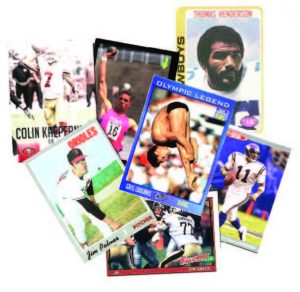 Finally, we have the realm of sports. No one has pushed the adoption conversation to the forefront in recent years more than the oversized star of baseball’s Yankees, Aaron Judge. He was born in 1992 in Linden, California, a one-stoplight town where he was adopted the next day by two local schoolteachers, Patty and Wayne Judge. They watched in astonishment as he grew to his current dimensions: 6’7”, 280 lbs., setting school records in baseball, football, and basketball. After a “cup of coffee” with the Yankees in 2016, he began terrorizing enemy pitchers in 2017 and won the Rookie of the Year award in a landslide. For now, he isn’t saying much about his biological parents, who one would guess from his appearance were some version of “mixed race.” Given his superstar status, and that it was a small town adoption, it’s unlikely the details will remain secret for long—even if he wants them to be.
Finally, we have the realm of sports. No one has pushed the adoption conversation to the forefront in recent years more than the oversized star of baseball’s Yankees, Aaron Judge. He was born in 1992 in Linden, California, a one-stoplight town where he was adopted the next day by two local schoolteachers, Patty and Wayne Judge. They watched in astonishment as he grew to his current dimensions: 6’7”, 280 lbs., setting school records in baseball, football, and basketball. After a “cup of coffee” with the Yankees in 2016, he began terrorizing enemy pitchers in 2017 and won the Rookie of the Year award in a landslide. For now, he isn’t saying much about his biological parents, who one would guess from his appearance were some version of “mixed race.” Given his superstar status, and that it was a small town adoption, it’s unlikely the details will remain secret for long—even if he wants them to be.
If Judge continues to hit homers and makes it to the Hall of Fame, he will not be the first adoptee in Cooperstown. That honor belongs to Jim Palmer, a six-time All-Star who won 268 games for the Baltimore Orioles between 1965 and 1984. Palmer was born in New York City in 1945 and adopted as an infant by a garment industry executive, Moe Wiesen, and his wife Polly. The Wiesens lived in Westchester County until Jim was 10. His father died in 1955 and his mother moved Jim and his sister to California. There she met and married Max Palmer, an actor. Jim still went by Wiesen as he began to make a name for himself on the baseball diamond. At a Little League banquet where he was to receive three trophies, he asked the emcee to call him Jim Palmer. On Max Palmer’s 87th birthday, he told Jim that was the highlight of his life, and that he was proud to see his last name on each of the Cy Young Awards that Palmer won.
Two notable gold-medal Olympians were raised by adoptive parents, Dan O’Brien and Greg Louganis. O’Brien, the star of Nike’s “Dan and Dave” commercials in the early 1990s, won the decathlon in the 1996 Summer Games. His biological parents were Finnish and African-American. He was adopted by an Oregon couple and raised in Klamath Falls. Louganis, who won four gold (and one silver) diving medals between 1976 and 1988, was put up for adoption at eight months. His biological parents were Samoan and Swedish. He was raised in Southern California by Peter and Frances Louganis (Louganis is a Greek name) and had pushed his way into his older sister’s gymnastics and dance classes by the age of two. He began diving at the age of nine when his parents installed a backyard pool.
The world of pro football offers three intriguing adoption stories: Daunte Culpepper, Colin Kaepernick and Tim Green. Culpepper was voted an All-Pro NFL quarterback in 2000 and again in 2004, and his football roots run deep. His birth mother, Barbara Henderson, was the sister of Thomas “Hollywood” Henderson, a star linebacker for the Dallas Cowboys in the 1970s. She was serving time for armed robbery in a Florida prison when she gave birth to a baby boy. One day later, he was adopted by Emma Culpepper, who worked in the jail and raised a total of 15 children. At 17, her son stood 6’4” and was named Florida’s top high-school football player. He went on to play 12 seasons in the NFL, and continues to use his fame to support the African American Adoption Agency. Kaepernick, whose refusal to stand for the National Anthem in 2016 triggered a social media firestorm, was the mixed-race child of a destitute teen mother in Milwaukee. Shortly after his birth, he was placed with Rick and Teresa Kaepernick, a couple who had lost two sons to heart defects. The family moved to California, where Colin blossomed into a top-rated baseball pitcher and straight-A student. He turned down diamond scholarships to pursue his dream of playing college football, eventually landing a full ride at the University of Nevada. After being drafted in 2011 by the San Francisco 49ers, Kaepernick led the team to the Super Bowl in 2012.
Tim Green, a defensive star for the Atlanta Falcons from 1986 to 1994, became an author of both fiction and non-fiction books after his playing days. In 1997, he published A Man and His Mother: An Adopted Son’s Search. In the book, Green talks about how he believed his “rejection” at birth drove him to become a high achiever, but also to have poor relationships with women. After learning that a girlfriend’s mother had given up a child for adoption at about the same time he was born (1963), he launched a seven-year quest to locate his birth mother so he could let her know that she had made the right choice—that he was successful and happy.
Which is everything a biological parent could possibly hope for, isn’t it?

Paramount Pictures
THAT’S MY BOY!
The original “Star Child” adoptee came to us from the Old Testament, with an assist from Cecil B. DeMille. According to the story in Exodus, a Hebrew woman named Jochebed placed her newborn son in a waterproofed basket and floated him downriver after Pharaoh had ordered the male children of Israel killed. The infant was plucked from the bullrushes by an Egyptian princess and raised as Moses, a member of Pharaoh’s royal family. Although Moses achieved greatness as a member of Egypt’s ruling class, it was after he embraced his birth mother that he took it to the next level.
Given that Moses is one of the Bible’s most iconic figures, it stands to reason that it would take an actor with some gravitas to play (and also voice) him on-screen. Over the years, the part has gone to Christian Bale, Christian Slater, Peter Strauss, Val Kilmer, James Whitmore, and Burt Lancaster. The most amusing Moses was Mel Brooks in History of the World Part I. The most famous was Charlton Heston in The Ten Commandments.
Little known fact: Baby Moses (above) was played by Fraser Heston, Charlton’s son. Thirty-four years later, Fraser—who became a producer and director—cast his father as Long John Silver in the 1990 film Treasure Island.

MORE LIKELY? LESS LIKELY?
What are the odds that an adopted child will flourish and excel, compared to a child raised by biological parents? The answer depends on one’s definition of “success.” So much of what we achieve is linked to self-image. That can be complicated for adoptees. Baby Boomers, for example, grew up in an era where they had zero information on who had given them up, or why. On the one hand, these children grew up feeling good that they were “picked” by parents who desperately wanted them. On the other hand, there is a dark place every adoptee has gone when they wondered why they were “discarded.”
A survey done a decade ago generated some interesting statistics. Three out of four adopted children are read to (or sung to) every day. This is true for only half of biological children. Also, ninety percent of adoptees had positive feelings about the process—including an appreciation for the selfless act of their birth mothers.
 WIN-WIN SCENARIO
WIN-WIN SCENARIO
Although some friends and family members may object to a young mother giving up a baby for adoption—or judge her harshly for the decision—statistics show that what is best for the baby usually has a positive outcome for the mother as well. Birth mothers are:
- No more likely to suffer from depression as single moms raising small children.
- Less likely to have a second out-of-wedlock pregnancy.
- More likely to delay marriage, but also more likely to eventually marry.
- Less likely to divorce.
- More likely to finish school.
- More likely to be employed 12 months after the baby is born.
- Less likely to live in poverty or receive public assistance.
It’s about time you knew…there’s a world of great watches beyond Rolex and Omega.
By Brandon Horner
As the holidays approach, gift-giving (and for some, receiving) moves from the back of our minds to the forefront, and it can be a little daunting. There’s that fear of disappointment, or worse, of apathy: that moment when a given gift falls flat, when we know, inevitably, that the piece of technology or some object of temporary charm will find its place in the back of a drawer, forgotten. Then again, we can also remember the time we gave or received gifts we knew would last: objects that we would carry with us or use for as long as we could, until they broke or were lost or, we hope, passed down. And for so many, that gift is a singular object: a watch.
There’s no doubt to the appeal of a mechanical watch. (A note to novices: all watches are either quartz—which run on replaceable or rechargeable batteries—or mechanical; the latter are far more desirable because with regular maintenance they can, in theory, last forever.) And yes, many now use their phones to tell time, or a device such as an Apple Watch. Yet there’s nothing to be passed down there, nothing lasting. I remember the first watch my wife gave me with vivid detail—with the same remarkable clarity as the memory of the Christmas when I received my first bicycle. I could not tell you a single moment of significance that I associate with purchasing or being given a piece of technology (save the Nintendo I received when I was five, but I digress). Simply put, when one has come of age, or is celebrating a beginning or ending of a significant moment in his or her life, no singular gift can carry the memory of that moment into the future like the gift of a timepiece.
For many who can afford the price of timelessness, Rolex and Omega are the first brands that come to mind. And it’s easy to see why. Make no mistake: Rolex’s logo is a crown for a reason. According to Forbes last year, Rolex is the most trusted company in the world, besting the likes of BMW and Walt Disney, Google and Lego. Everything about a Rolex watch—its fit and finish, its design and reliability—is unmatched in the industry. Right behind Rolex is Omega, a company that may not have as many iconic designs in its portfolio (though timepiece aficionados do covet the “Moonwatch,” an iconic Omega chronograph that was the first watch on the moon, and which is still in production today), but whose product is equally reliable. Some even believe that, from a horological standpoint, (fancy-speak for the design of the actual movement inside the watch), Omega is the more cutting-edge, innovative watchmaker
These are all overly popular watches. They are popular for good reason, but still, it’s rare to see something other than a  Rolex Submariner (left) or DateJust, or an Omega Speedmaster or Seamaster, or a Cartier Roadster or Tank on the wrist of someone who has been given (or who has bought himself or herself) a nice watch.So, what are some alternatives for those who want something a little different?
Rolex Submariner (left) or DateJust, or an Omega Speedmaster or Seamaster, or a Cartier Roadster or Tank on the wrist of someone who has been given (or who has bought himself or herself) a nice watch.So, what are some alternatives for those who want something a little different?
A fantastic choice for those who value the reliability and styling of a brand like Rolex is Tudor, a close cousin to the most famous watchmaker in the world. For a while, Tudor was owned by Rolex, 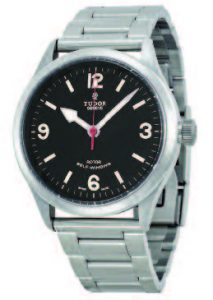 and benefitted from the overlap: Tudor watches from the 60’s and 70’s mimicked Rolex designs and matched their quality. Components were often machined using the same processes and materials. The only difference was on the inside.
and benefitted from the overlap: Tudor watches from the 60’s and 70’s mimicked Rolex designs and matched their quality. Components were often machined using the same processes and materials. The only difference was on the inside.
Where Rolex would use its own “in- house” designed movements, Tudor movements were made out-of-house, often by a group called ETA (which is owned by the Swatch Corporation). Unfortunately, Tudor’s watches weren’t available in the United States between 2004 and 2013, but in their reentry, Tudor challenged the watch market with a number of reissued sport models they released in the 60’s and 70’s. Today, Tudor has become a powerhouse in its own right. Its watches are still held to a high standard, and it has begun producing its own movements in-house, which is a big deal in the watchmaking world. Models such as the Tudor Black Bay, the Tudor Heritage Chrono Blue, and the Tudor Heritage Ranger (above) are all fantastic, (relatively) affordable timepieces that will last a lifetime.
Another brand that is not very well known outside the watch world is Panerai, which is notable for its large, masculine, easily-readable watches. Panerai’s two iconic styles—the Luminor, with its distinctive crown guard, and the Radiomir (below) , with its wire lugs— seem bulkier than most watches. But this design is what makes them unmistakably Panerai, as most dials feature large numerals and thick steel cases. Like all Panerai models, they have their heritage in the brand’s link to the Italian Navy, so they are technically dive watches—though most come on Panerai’s famous thick leather straps. The brand is actually Swiss, although if you ever visit Florence, you can still stop in to Panerai’s first shop, in the same plaza as the city’s famous Duomo. Another brand that is a bit unknown outside of the watch world is Jaeger LeCoultre (JLC). There’s a cliché among watchmakers that almost every famous timepiece has “a little Jaeger LeCoultre in it.” For decades, Jaeger played a literal role in production for many household-name watch companies, often supplying them with JLC-designed movements. Today, JLC continues to lead the way in horological innovation. Its most famous design is the
, with its wire lugs— seem bulkier than most watches. But this design is what makes them unmistakably Panerai, as most dials feature large numerals and thick steel cases. Like all Panerai models, they have their heritage in the brand’s link to the Italian Navy, so they are technically dive watches—though most come on Panerai’s famous thick leather straps. The brand is actually Swiss, although if you ever visit Florence, you can still stop in to Panerai’s first shop, in the same plaza as the city’s famous Duomo. Another brand that is a bit unknown outside of the watch world is Jaeger LeCoultre (JLC). There’s a cliché among watchmakers that almost every famous timepiece has “a little Jaeger LeCoultre in it.” For decades, Jaeger played a literal role in production for many household-name watch companies, often supplying them with JLC-designed movements. Today, JLC continues to lead the way in horological innovation. Its most famous design is the  Reverso, (left) a rectangular dress watch in which the face can be flipped around to protect the crystal. It was originally designed to be worn by polo players. Like Panerai, Rolex, and Omega, there’s a high entry point into a watch of this quality, but for those in the know, Jaeger LeCoultre offers more pedigree, history, and iconic design than most other famous watchmakers.
Reverso, (left) a rectangular dress watch in which the face can be flipped around to protect the crystal. It was originally designed to be worn by polo players. Like Panerai, Rolex, and Omega, there’s a high entry point into a watch of this quality, but for those in the know, Jaeger LeCoultre offers more pedigree, history, and iconic design than most other famous watchmakers.
Imagine, years from now, you or a loved one wearing a timepiece made by a company that you had never heard of before—one you might wear for your whole life and then pass down—all because you were willing to look for something a little unexpected. EDGE
Editor’s Note: If you find yourself looking to buy a watch that will last more than a lifetime, there are a lot of superb options, and they extend far beyond the ubiquitous offerings of the two watch brands most people can name. All these brands offer wonderful products and world-class service. To learn a little more, visit their websites to find your nearest retailer, and check them out in person.
 TRINITAS NAMES NEW ER AFTER CEO
TRINITAS NAMES NEW ER AFTER CEO
To honor his five decades of healthcare leadership in both New York and New Jersey, Trinitas Regional Medical Center named its new $18.7 million Emergency Department after Gary S. Horan, FACHE, Trinitas President and CEO. The expansion will deliver emergency care more quickly, and with higher quality, raising the number of treatment beds from 27 to 45, and providing separate treatment areas where the most appropriate care can be given to seniors, families, and behavioral health patients. For more on this difference-maker see “Partners In Time” on page 45.
 SHARING IS CARING!
SHARING IS CARING!
In partnership with HRSA and Workplace Partnership for Life, The NJ Sharing Network recognized Trinitas Regional Medical Center for its efforts to promote awareness about the life-saving benefits of organ and tissue donation. More than 1,000 hospitals came together across the country to participate in the 2017 Hospital Campaign. In total, this campaign added 26,975 donor registrations over a seven-month period. Trinitas was recognized with the Sharing Network’s Platinum Award for its vigorous marketing and education focused on the importance of organ and tissue donation.
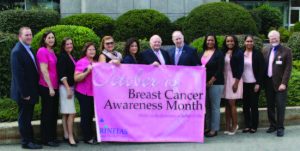 PAINT THE TOWN PINK!
PAINT THE TOWN PINK!
With a goal of spreading breast health awareness during October and all year round, Trinitas partnered with the City of Elizabeth and Elizabeth Department of Health and Human Services to “Paint the Town Pink!” With pink ribbons displayed throughout the city’s buildings and storefronts, the initiative hosted two events: one at Bloomingdale’s at Short Hills Mall and another at Proceed Inc. Special thanks to all partners for making this event possible: Union County Board of Chosen Freeholders, Union County Office of Women, Susan G. Komen- North Jersey, Greater Elizabeth Chamber of Commerce, and the Elizabeth Avenue Partnership.
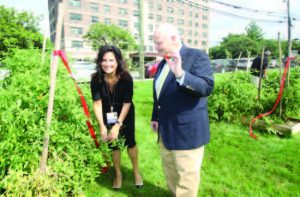 GARDEN OF HEALTH
GARDEN OF HEALTH
Gary S. Horan (President & CEO, Trinitas RMC) and Nancy DiLiegro (VP, Clinical Operations and Physician Services/Chief Clinical Officer, Trinitas RMC) recently took a stroll through the new community garden located at Trinitas’ New Point Campus in Elizabeth. The Community Garden was made possible by Groundwork Elizabeth, The Fruit Tree Planting Foundation, and the Union County Board of Chosen Freeholders. The garden will be tended by the Child Adolescent Program within Trinitas’s Behavioral Health Department, and serve as a long-term therapeutic tool for these patients.
 THE PINK ROOM
THE PINK ROOM
Maria Sparacio, owner of The Pink Room in Union, NJ has partnered with Trinitas Regional Medical Center to provide shapewear garments for new moms. Maternity and post-partum body girdles will be offered at a discounted rate for the next year only at Trinitas! The Pink Room was founded in May of 2008 and has great reviews and results from clients all throughout New Jersey.
 SHARING A PINK EVENING
SHARING A PINK EVENING
Trinitas collaborated with Bloomingdale’s at Short Hills Mall to host an event focused on breast health awareness. From left to right: Dr. Clarissa Henson, Radiation Oncologist; Dr. Heidi Fish, Pathologist; Dr. Dipti Pandya, Radiologist; Dr. Michelle Cholankeril, Medical Oncologist; Dr. Adriana Suarez-Ligon, Breast Surgeon; provided key information on preventative care, screening, and treatment. If you missed this event and would like more information on Trinitas Comprehensive Cancer Center and its team of specialists call (908) 994-8000.
Submit your EDGE People event at www.edgemagonline.com
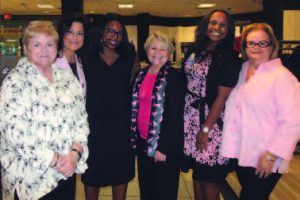 Connie Dwyer of the Connie Dwyer Breast Center Foundation (far left), was also in attendance. From left to right Connie is accompanied by Nancy DiLiegro (VP, Clinical Operations and Physician Services), Marlie Messina (Public Relations Manager, Bloomingdale’s Short Hills & Bridgewater), Nadine Brechner (Chief Development Officer and VP of the Trinitas Health Foundation), Roselena Twyne (Community Initiatives/Clinical Support Services Specialist), and Janet Lesko (Executive Director, Connie Dwyer Breast Cancer Foundation).
Connie Dwyer of the Connie Dwyer Breast Center Foundation (far left), was also in attendance. From left to right Connie is accompanied by Nancy DiLiegro (VP, Clinical Operations and Physician Services), Marlie Messina (Public Relations Manager, Bloomingdale’s Short Hills & Bridgewater), Nadine Brechner (Chief Development Officer and VP of the Trinitas Health Foundation), Roselena Twyne (Community Initiatives/Clinical Support Services Specialist), and Janet Lesko (Executive Director, Connie Dwyer Breast Cancer Foundation).
EDGE takes you inside the area’s most creative kitchens.
 Paragon Tap & Table • Sweet Potato Gnocchi
Paragon Tap & Table • Sweet Potato Gnocchi
77 Central Ave. • CLARK
(732) 931-1776 • paragonnj.com
At Paragon Tap and Table the menu always takes a shift with each passing season. The fall is my favorite time of year; it brings out the comfort dishes. This is reflected in our Sweet Potato Gnocchi with braised lamb shoulder. It’s the perfect fall dish to pair with one of our local craft beers.
— Eric B. LeVine, Chef/Partner
 Arirang Hibachi Steakhouse • Wasabi Crusted Filet Mignon
Arirang Hibachi Steakhouse • Wasabi Crusted Filet Mignon
1230 Route 22 West • MOUNTAINSIDE
(908) 518-9733 • partyonthegrill.com
We prepare a crusted 8-ounce filet mignon served with gingered spinach, shitake mushrooms, and a tempura onion ring.
 Daimatsu • Sushi Pizza
Daimatsu • Sushi Pizza
860 Mountain Ave. • MOUNTAINSIDE
(908) 233-7888 • daimatsusushibar.com
This original dish has been our signature appetizer for over 20 years. Crispy seasoned sushi rice topped with homemade spicy mayo, marinated tuna, finely chopped onion, scallion, masago caviar, and ginger. Our customers always come back wanting more.
 Publick House • Tuna Crisp
Publick House • Tuna Crisp
899 Mountain Ave. • MOUNTAINSIDE
(908) 233-2355 • publickhousenj.com
Our take on a spicy tuna roll, the Tuna Crisp has been our most popular app since we opened. Sushi grade tuna is mixed with a spicy mayo and spread on top of crispy sushi rice. Topped with soy gastrique wasabi aioli and scallions, this dish will satisfy sushi lovers and non-sushi lovers alike.
— Bernie Goncalves, Owner
 The Barge • Cioppino
The Barge • Cioppino
201 Front Street • PERTH AMBOY
(732) 442-3000 • thebarge.com
Our Cioppino, the signature dish of San Francisco, features a fresh, healthy selection of clams, mussels, shrimp, Maine lobster and Jersey scallops—drizzled in Greek virgin olive oil, with fresh garlic and white wine—over homemade Italian linguini. I know it will become one of your favorite dishes.
— Alex Vosinas Chef/Owner
 Luciano’s Ristorante & Lounge • Jumbo Lump Crab Cake Bruschetta
Luciano’s Ristorante & Lounge • Jumbo Lump Crab Cake Bruschetta
1579 Main Street • RAHWAY
(732) 815-1200 • lucianosristorante.com
Jumbo lump crab cake bruschetta, finished with virgin olive oil and a balsamic reduction has been one of Luciano’s signature appetizers since we opened.
— Joseph Mastrella, Executive Chef/Partner
 Morris Tap & Grill • Pan Seared Scallops
Morris Tap & Grill • Pan Seared Scallops
500 Route 10 West • RANDOLPH
(973) 891-1776 • morristapandgrill.com
At Morris Tap and Grill we always change the menu with every season. The fall is no exception. I work with local farmers, fish mongers and butchers to ensure the best quality and the best season for all that is on the menu at Morris Tap and Grill. Featured here is the new Pan Seared Scallops with horseradish edamame risotto, mustard demi and tempura snow peas.
— Eric B LeVine, Chef/Partner
 Costa’s Italian Ristorante & Catering • Paglia Fieno Mimosa
Costa’s Italian Ristorante & Catering • Paglia Fieno Mimosa
120 Chestnut Street • ROSELLE PARK
(908) 241-1131 • costasitalianrestaurant.com
Our Paglia Fieno Mimosa features spinach and egg fettuccine in a brandy cream sauce with peas, mushrooms and prosciutto.
— Nicola & Brian, Hosts
 LongHorn Steakhouse • Outlaw Ribeye
LongHorn Steakhouse • Outlaw Ribeye
272 Route 22 West • SPRINGFIELD
(973) 315-2049 • longhornsteakhouse.com
LongHorn Steakhouse has just opened in Springfield, and we are looking forward to meeting all of our future guests! When you visit us, we suggest you try our fresh, never frozen, 18 oz. bone-in Outlaw Ribeye — featuring juicy marbling that is perfectly seasoned and fire-grilled by our expert Grill Masters.
— Anthony Levy, Managing Partner
 Arirang Hibachi Steakhouse • Volcano Roll
Arirang Hibachi Steakhouse • Volcano Roll
23A Nelson Avenue • STATEN ISLAND, NY
(718) 966-9600 • partyonthegrill.com
Hot-out-of-the-oven, crab, avocado and cream cheese rolled up and topped with a mild spicy scallop salad.
 Galloping Hill Caterers
Galloping Hill Caterers
Galloping Hill Road and Chestnut Street • UNION
(908) 686-2683 • gallopinghillcaterers.com
Galloping Hill Caterers has been an incredible landmark for nearly sixty years. We pride ourselves in delivering “over the top” cuisine, impeccable service and outstanding attention to detail. That is the hallmark of our success! Simply, an unforgettable experience. Pictured here is one of our crepes flambé that really creates lots of excitement!
— George Thomas, Owner
 Vine Ripe Markets
Vine Ripe Markets
430 North Avenue East • WESTFIELD
(908) 233-2424 • vineripemarkets.com
During the holidays, do you strive to serve authentic holiday favorites, but rarely have the time to do so? Our gourmet catering department tirelessly works to provide the best authentic dishes, at the right price. Whether it is a perfectly roasted Thanksgiving turkey, or a complete journey through The Feast of the Seven Fishes (Festa dei sette pesci), our catering team has you covered.
— Frank Bruno, Chief Culinary Officer
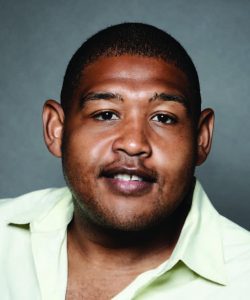
Photo by Irvin Rivera
Actors often talk about the challenge of establishing a physical presence in the scenes they play. Not a problem for Omar Miller. If anything, the challenge is for his directors, who must find a way to wedge his 6’6” frame into the shot. From his breakthrough role in the 2002 Eminem film 8 Mile, to his critically acclaimed turn in Spike Lee’s Miracle at St. Anna, to his current co-starring gig with Dwayne Johnson in HBO’s pro football opus Ballers, Miller has turned in one thoughtful, touching performance after another. In a wide-ranging Q&A, Ashleigh Owens ventures into the “O-Zone” to trace his evolution from a baseball star in Anaheim to an acting star in San Jose—to the scene-stealing “gentle giant” he has become today.
EDGE: The characters you play tend to be gentle and sensitive. Is that something you like to bring to your roles, or is it something directors are looking for when you read for parts?
OM: You know what? It’s a combination. But really, this is one of those Hollywood pigeonholing things, to a certain degree. Every now and then I get to do something where I get loose and I really enjoy it when I do. I think that in Hollywood, when they find one of your characteristics or traits that resonates with audiences, they continue to use you in that capacity. It’s not necessarily a bad thing. It’s just that you like to show other wrinkles from time to time. So, with me, people seem to love a giant dude that is also very gentle. It’s been an interesting element in my career.
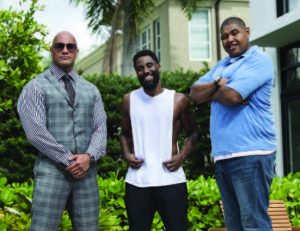
HBO/Warner Bros. Television Distribution
EDGE: Where does that pigeonholing come from?
OM: If you watch movies and television, I’m definitely not the pioneer in the “gentle giant” space. It’s just a position that those audiences and creators like. They like the idea of contrast, and when you have a person who is eligible and able to do a lot of physical damage—yet takes extreme care and sensitivity—there’s something interesting about that.
EDGE: Did you have a particular moment where you said, “Hey maybe I can make a living as an actor?”
OM: Actually, I was still an audience member when I had that light bulb moment. I was in college at San Jose State watching Homeboys in Outer Space and I was like, Wow. I could do this. I was done playing baseball and was trying to figure out what the next step in my life was going to be. And thank God that I found acting, got into theater, and ran into wonderful professors who helped me hone my abilities and understand what the craft and skill set actually is of performance. Things have really fallen into place. I am blessed.
EDGE: I know that during my own college career, theater class was something I was able to jump into and I found it to be an enjoyable subject.
OM: I feel like it’s an exploratory thing—anyone can take a theater class. I know my first theater class was a General Education class, and part of the reason it was offered as a G.E. class is because theater can help you in other areas of your life, no matter what it is. It just makes you more self-aware, able to speak in front of people more comfortably and get your point across. There are a lot of things that theater can teach everybody.
EDGE: How does it feel to combine your dual passion for acting and athletics?
OM: It’s cool because both areas are so captivating in society right now. One of the things that I love about being an actor is that it gives you access to so many different worlds. The world of sports is something I know a bunch about. So, when you combine that with the actual performance, it adds a little bit.
EDGE: Is that something you’ve discussed with your Ballers co-star, Dwayne Johnson?
OM: No, not really. Those connections are obvious. With his background as a professional football player at one point, doing a show about football has a special place in his heart. A guy like Dwayne is living such a bizarre life compared to what regular people know about. That’s one of the things that’s great about him—he’s able to keep a level head despite the heights he continues to rise to.
EDGE: What’s an important take-away from Ballers?
OM: We’re putting out material that can give people a sneak peek into the world that they’re interested in, but may not actually know much about. I think the show gives a good inference into the world of sports and finance, the excess that can happen, and how easy it is to get caught up in that and lose yourself, your soul, your morals and mind. I love that it entertains people, but also helps them to understand that the people they idolize are real people as well.
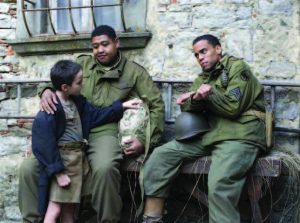
40 Acres and a Mule Filmworks/Touchstone Pictures
EDGE: You played a World War II soldier in Miracle at St. Anna and obviously you didn’t have military experience. How difficult was it for you to convey the terror of warfare—what did you draw on?
OM: I spoke to one of my uncles, who was a Buffalo Solider and is still alive. I spoke to him about the experience and what it was like to be an American, then to go to Europe at the time, and the different ways you were treated, and then also be literally facing the Nazis. I did a lot of research for that role, and I had to lose 75 pounds. I shot that film at the end of the summer, right after I made a movie called The Express, where I played an offensive lineman who was a very, very big dude. It was drastic—there was a lot that went into getting that role. To date, it’s still my favorite thing I’ve ever done.
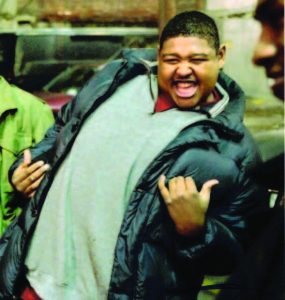
Imagine Entertainment
EDGE: How did Spike Lee get what he wanted from you as an actor?
OM: The beauty about Spike is that he knows what he wants out of making his films. You have the confidence of a veteran to understand what it is that he’s going for, so there’s not a lot of confusion about what he wants from you as an actor. I got along well with Spike because he’s a master at capturing your performance, and as an actor, he makes it very clear that it is your responsibility to craft the performance. What he’s going to do is capture the performance. And I was able to really benefit from his structuring.
EDGE: How did the film impact your life?
OM: It opened me up to my own popularity worldwide. And also to travel. The majority of the film was shot in Italy. And in that respect, a beautiful thing took place. I started to grow. Ever since I made that movie, I’ve gone to Europe once a year, every year. Miracle at St. Anna also opened me up to more opportunity, because Spike selected me for the film. Whenever you’re directly working alongside Spike, and he gives you that stamp of approval for using you, it’s a good feeling. You’ve grown up watching this man and his films and you can definitely see why he’s great at what he does. My favorite film is Mo’ Better Blues. It was a great experience to sit on set and get to talk to him about it.
EDGE: You also had the opportunity to work with Eminem in 8 Mile and, a couple of years later, 50 Cent in Get Rich or Die Tryin’. How do they compare?
OM: It was like night and day! Both of them were extremely popular. Eminem is very introverted and 50 is very extroverted. 50 is like your friend that won the lotto. Eminem is somebody that isn’t made for that massive attention.
EDGE: Looking back, if 30-something Omar could offer 20-something Omar a piece of acting or career advice, what would it be?
OM: Be persistent and make your own stuff. Nowadays, there’s so many different outlets. Someone, somewhere wants to see what you create…but you have to create it for it to be seen.
 : Ashleigh Owens is the daughter of the late Tracey Smith, EDGE’s longtime Editor at Large. Ashleigh’s conversation with Omar Miller also delved into the craft of acting and his love of sports. Log onto EdgeMagOnline.com to read more of their Q&A.
: Ashleigh Owens is the daughter of the late Tracey Smith, EDGE’s longtime Editor at Large. Ashleigh’s conversation with Omar Miller also delved into the craft of acting and his love of sports. Log onto EdgeMagOnline.com to read more of their Q&A.

Photo by NBCUniversal/Heidi Gutman
The entertainment industry is full of people who play Mr. Nice Guy. The list of stars who actually are nice is considerably shorter. If Harry Connick, Jr. wanted to be a jerk, he could probably pull it off. He has the money, talent, work ethic and show biz instincts to live by his own set of rules and torture the folks around him—and still make his fans believe he’s their pal. That Connick is, by all accounts, one of the true sweethearts in the business makes his sustained stardom all the more remarkable. Since his breakthrough as a virtuoso musician and Sinatra-caliber crooner in the 1980s, he has conquered film and television as both a dramatic and comic actor, connected with Reality TV audiences as himself on American Idol, and used his fame to make a difference in the actual reality of his beloved New Orleans. Now Connick is leaving his imprint on the daytime talk space—to rave reviews—with Harry, and also revisiting his iconic role in NBC’s reboot of Will & Grace. As Gerry Strauss discovered, when Connick decides to tackle a new project, there is little doubt about the outcome. The NFL Saints will be looking for a new quarterback one of these days. Do you think…nah.

Enigma Productions/Warner Bros.
EDGE: What aspects of stardom are most rewarding for you?Creative freedom? Being able to make a difference in other people’s lives? Doing right by your family?
HC: I’d say the first two things are probably a tie. I mean, creative freedom is way up there, only because all I really want to do is try to function artistically on as high a level as I can. Success gives you the ability to do that. I get to work with great musicians, and I have the facilities that I need to improve. It’s like a chemist. If he’s successful, he gets to have a great lab to work in and that expedites the creative process, so that helps immensely. The ability to be heard is important, too, especially in times when your voice can make a difference. I think back to times when, had I not had a public platform upon which to stand, I would not have been able to do things like start the Crew of Orpheus, which was the first multi-racial, multi-gender major Mardi Gras parade in New Orleans. Or start the Musician’s Village, which is an incredible project that Branford Marsalis and I started. Or be of some help during Hurricane Katrina. Those are all things that I was able to do as a result of being in the public eye, so I think it’s a tie between that and creative freedom.
EDGE: From whom did you learn the most during your music career?
HC: Probably Ellis Marsalis. He was my teacher back in high school. I probably spent the most hours with him, if you were to count up all the hours I’ve ever spent with everybody, because I was with him every day for four years. Ellis taught me things that I still use to this day, and if anyone were to be credited for having the biggest influence on my playing, it would be Ellis.
EDGE: Given the state of Jazz in the 80’s, how secure were you in the belief that you’d have a real shot at carving out a lucrative career for yourself?
HC: Well, it’s like when you’re a kid and you look at yourself in the mirror, and you look at your family. If you’re around people that kind of eat the same food, and talk like you, and look like you…that’s your norm. Jazz music was my norm. It’s who I was. I never thought about it as being a risk. It’s just who I was. So when I moved to New York, I didn’t even think about playing any other kind of music, because that’s the music that I knew. When you believe in yourself—and you have a little bit of confidence and a drive to be known in this industry—the last thing you’re thinking about is Oh my gosh, I hope I’m making the right decision. All I wanted to do was play music, and at that time all I was doing was playing piano and singing, and I was playing jazz music, and I loved it. It was just something that I had to do. I felt compelled to do it because I loved it so much.
EDGE: At 25 years old, you released one of the most enduring holiday albums ever, When My Heart Finds Christmas. Did you have any idea that this album would stand the test of time and become an all-time classic?
HC: It’s just such a humbling feeling to know that that record has been a part of so many people’s lives around the holidays. I never really think about whether things are going to endure or not. All I can do is try to make the best record, or best TV show that I can. You never know how people are going to respond to it, and the fact that it’s stuck around for so long is just a thrill. I worked just as hard on that album as I did on all of them. I’m thankful I did it, and I always enjoy playing those songs around Christmas time.
EDGE: You seem equally comfortable on stage or in the studio. Do you consider yourself more of a recording artist who plays live shows, or a live performer who occasionally records?
HC: I think it’s too hard to define. I mean, I’m a live performer for sure. But I also relish the time I have in the studio. It’s really hard to pull those two things apart. I’m probably equal parts live performer, and equal parts recording artist.
EDGE: You’re obviously comfortable in front of the camera. Has that always been the case?
HC: I’ve always loved being in front of the camera. I started doing public appearances at a really young age—probably six or seven years old—and started making records at nine years old, and being on TV and stuff since I was a kid. So the idea of that was always really familiar to me. I’m not a snow skier. I’ve gone a dozen times or so, but I’m terrible, and when I get off the lift I’m always nervous, because I don’t have the skillset to guarantee myself that I’m gonna be able to make it down safely. And you see these little kids out there doing it with no problem. It’s the same kind of thing. Some people say, “Well, how do you go up in front of all those people and perform on Broadway?” It’s just what I do. I’ve done it for so long. I just feel very comfortable being on stage and in front of the camera.
EDGE: Do you have a favorite genre in terms of acting?
HC: I like whatever I’m doing at the time. When I’m doing Broadway, I love that because I’m very, very focused. When I’m doing Will & Grace or another sitcom, it’s the same type of thing. All I think about is the moment. The fun thing about doing Harry is that, although I get to do different things under the same roof, it’s still its own skillset—hosting a daily syndicated television show—so I’m focused on that, and all of the things that I have to do to try to make that show as good as I can. Like, right now I’m in “TV Show” mode, and I’m just loving every second of it. Whatever I’m doing at the time, I think, is what I enjoy the most.
 EDGE: To what do you attribute your success beyond your music career?
EDGE: To what do you attribute your success beyond your music career?
HC: I think it starts with believing in yourself, and believing that what you have to offer is something that other people might like. And working really, really hard at it. I have a work ethic second to none, and you can say what you want about my talent or lack thereof, but you’re not gonna find many people who work harder than I do.
EDGE: Why is that?
HC: I genuinely appreciate the opportunity to do it. One of the things I get asked a lot is, “How are you doing with the grind of daytime?” I can’t get over that. It’s not a grind to me! Every day I wake up, and I’m thankful to be there. Do I have days where I’m tired or sick? Of course. But I’m fortunate to be here, and I’m going to give these people one hundred percent of myself every single time. I think those things probably have something to do with the success I’ve been able to achieve.
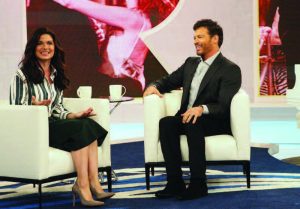
HC Productions/NBC Universal Television
EDGE: What intrigued you about having your own talk show?
HC: Well, I love to perform and I love to be with people. I’ve been inspired by amazing women my entire life, I continue to be, and I wanted to do a show that I thought might have its own lane—a daytime show with music that celebrated everyday people and wasn’t about gossip or politics. It was about acknowledging incredible people for what they’ve done, having the occasional celebrity come on and share their story, and just doing a show that made people feel good. You never know if the thing’s gonna work…or if anybody’ll even buy it. But they bought it, and we were lucky enough to get five Emmy nominations the first season out. These shows rarely get picked up, and the fact that we got picked up for Season Two with a continually growing audience sends a very clear message to me that maybe our hunch was right. Maybe people want to watch a show that is wholesome, that you can watch with your whole family, but which is trying to be a show on a high artistic level, too. Those are all the reasons that made me want to do it.
EDGE: What went into shaping the vibe and format?
HC: Well, the last thing I wanted to do is plug myself into an existing formula. You see a lot of the same type of daytime shows on TV. Some of them are great. The host comes out, there’s a monologue, there’s a celebrity guest, there’s another celebrity guest, there’s another celebrity guest, and people do that really well. I didn’t want to do that because I’m not a “talk show host.” I wanted to do more of an experience that everybody kind of celebrates together. So I built everything based on my skillset, which is music, entertainment, and things I love to do.
EDGE: For example?
HC: I like to go in my audience all the time..we play live music on daytime television—we’re the only people who do that. I’m the only host that writes the music for the band. I did things that I knew how to do and, again, you never know if it’s gonna work. But I think people know that I’m sincere. Regardless of your feelings toward me, or what I have to offer, I think one thing that’s undeniable is that I absolutely love doing it, and I’m honored to do it, and every day when people come in I just feel blessed to be able to perform for them. Hopefully those things come across, and show people that they have a choice when they watch daytime.
EDGE: What’s been your favorite part of doing Harry?
HC: Meeting the women I call “Leading Ladies.” That was the first idea I had for the show. Fine, amazing women that I can talk to and that can inspire other people. Just yesterday, we filmed the captain of the ferry in New York that was one of the first responders when Miracle on the Hudson took place. I think she’s the only female ferry captain. Certainly she was the first one, and she just went into autodrive and saved dozens of people. This woman is amazing, and I said, “What do you have to tell young women out there?” She says, “Believe in yourself.” These are messages that we can’t hear enough—especially young women who I think struggle with self-esteem. Young boys do, too. But it’s tough out there for young girls. I have three daughters, and I’m aware of that, so I love having strong women. That’s my favorite part of the show.
Who were your inspirations for creating the fictional queen Helena in The Royals?
Well, I thought to myself when I got offered this part, What would it have been like if Princess Diana had become Queen of England? I felt she was someone we could identify with more, because she’s a more similar age group and then her kids would be about the age of [Helena’s] kids now. And so I sort of took some inspiration from her, knowing how she dressed, how she spoke…stepping out of cars, raising money, making speeches. So I took that as some inspiration. But then, of course, what we never got to see with Princess Diana really was behind those closed doors. So all that, I made up myself.
Growing up as a kid, did you ever want to be Queen of England?
Yes. I think all little girls dream of being princesses…I remember as a child I used to do an awful lot of play-acting. I was always a star—normally royal. My little brother would be my pageboy who would have to shuffle behind me carrying whatever I was carrying. So right from then, I’ve had it in the back of my mind that I’d be a very good queen. So obviously when this came, it was a slam-dunk.
How friendly have you been with members of the royal family?
Oh, very friendly! No…but I have had the honor of meeting some members of the royal family at various events. As a private friend? Sadly, though, not.
Who is your favorite British Royal?
I remember meeting Prince Charles a couple times, because I’m a patron of one of his charities. And I have to say I’m a huge fan of Prince Charles. I’ve always voted him the best-dressed man in the United Kingdom, if not the world. His tailoring is impeccable, phenomenal. Anybody whom I’ve met in the royal family, I’ve just been bowled over by their skill in social situations. I know it’s their job, but they are master diplomats. They’re just unbelievable, and that’s something that I think my character, Queen Helena, she really, really wants her children to be like that. She wants Princess Eleanor, she wants Prince William to just be fabulous and wonderful examples to the world. And, of course, in her opinion, they fail her miserably all the time.
You get to play with Joan Collins in this series. How is that?
We often discussed how much we’d love to play mummy and daughter, and it’s third-time lucky. Joan used to say to me, “We better hurry up and make it happen or you’ll be much too old to be my daughter!” So finally it happened.
Did you grow up seeing Dynasty?
Sure. I watched Dynasty. I was obsessed with it. In fact, when Joan was cast to come and play my mother, I was in my trailer with my son. I said, “You know what, Damian, I’ve gotta show you something.” So I Googled Joan fighting. And we watched her fights for hours in the trailer. Best TV I’ve ever seen in my life. I swear.
Editor’s Note: The Royals, which airs on E!, is the network’s first scripted series. Season 4 of The Royals begins in December. This interview was conducted by Erwin van Steede/The Interview People.



